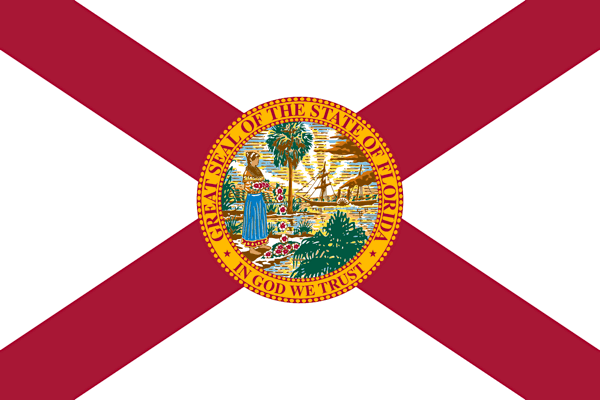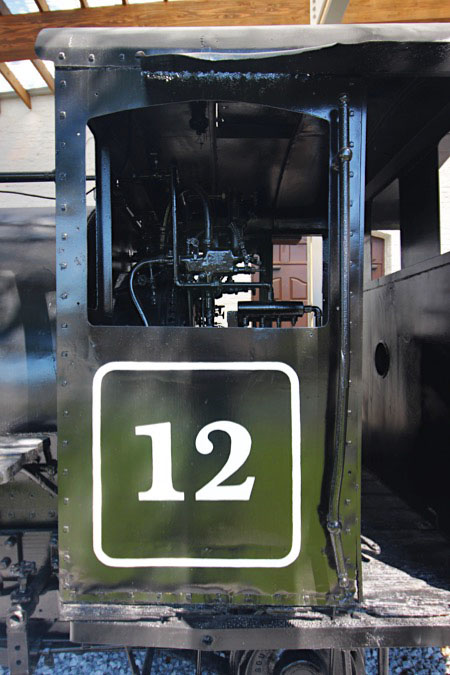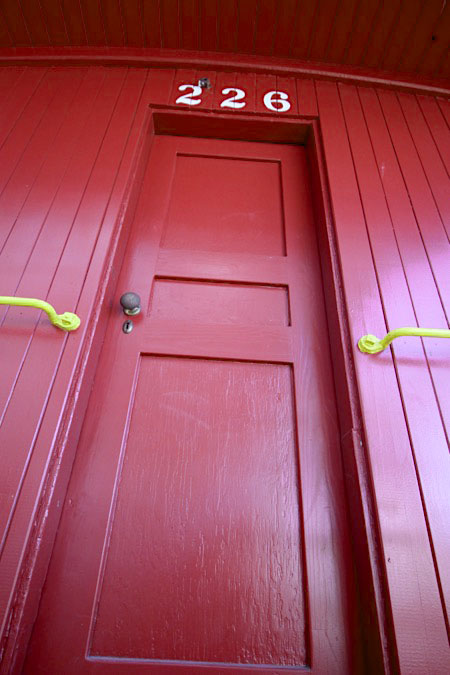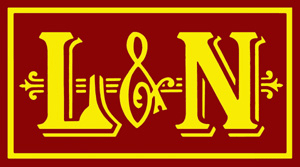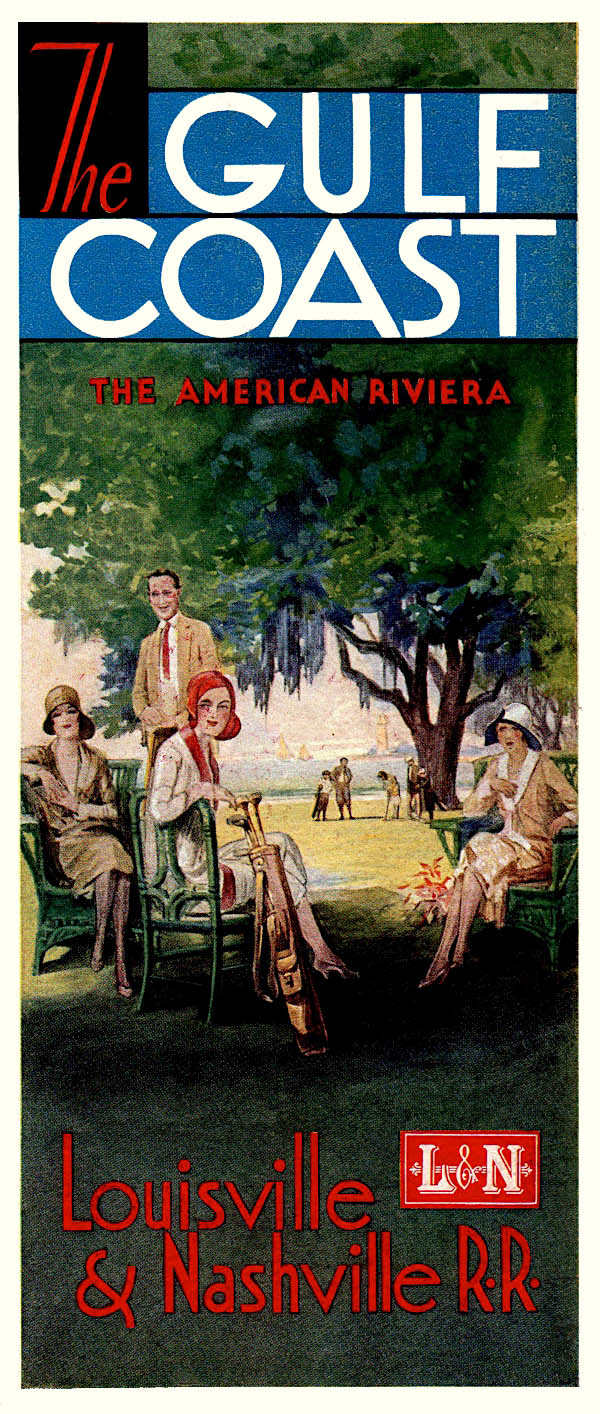
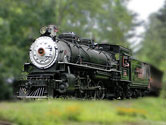






 |
Pensacola Museum of IndustryUniversity of West Florida Historic Trust |
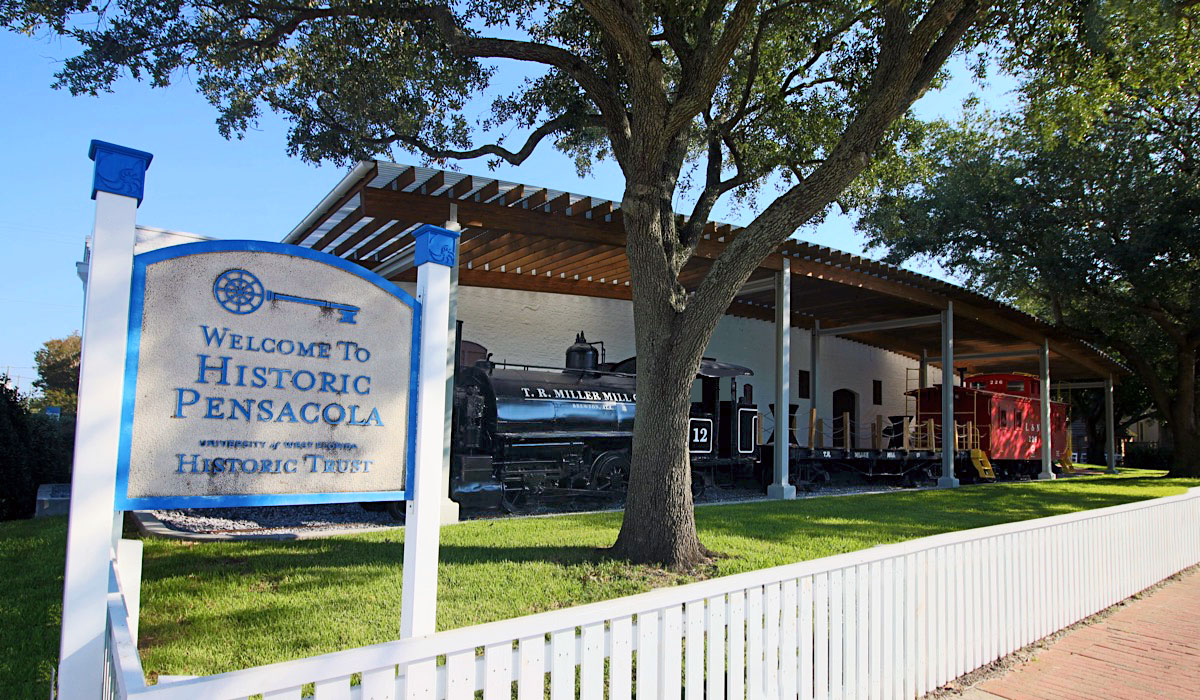
Pensacola, Fl / Sep 2024 / RWH

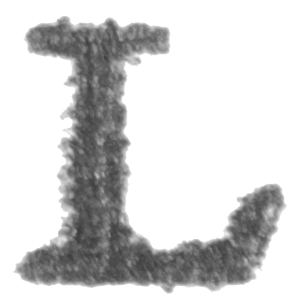 umbering, brick making, railroads, and commercial fishing were among the industries that propelled Pensacola from a sleepy frontier garrison into a thriving commercial center in the 19th century. Step back in time and learn more about some of Pensacola's pivotal industries.
umbering, brick making, railroads, and commercial fishing were among the industries that propelled Pensacola from a sleepy frontier garrison into a thriving commercial center in the 19th century. Step back in time and learn more about some of Pensacola's pivotal industries.

 he Pensacola Museum of Industry, located in downtown Pensacola's Historic Village, highlights the industrial and economic history of the city and Northwest Florida. The museum inhabits the 1884 Cobb Warehouse of the Pensacola Ice Company, later used by the New Orleans Grocery Company. Through a series of exhibits, the museum showcases key industries that shaped the region, including fishing, lumber, brickmaking, and railroads. Visitors can examine artifacts, machinery, and interactive displays that tell the story of the area's transformation from a colonial trading post to a modern industrial hub. Adjacent to the museum building is the Barbara Goggins Trail Pavilion, which includes T R Miller Mill Company steamer #12, a Miller Mill Co. wooden flatcar, and a restored Louisville & Nashville wooden caboose.
he Pensacola Museum of Industry, located in downtown Pensacola's Historic Village, highlights the industrial and economic history of the city and Northwest Florida. The museum inhabits the 1884 Cobb Warehouse of the Pensacola Ice Company, later used by the New Orleans Grocery Company. Through a series of exhibits, the museum showcases key industries that shaped the region, including fishing, lumber, brickmaking, and railroads. Visitors can examine artifacts, machinery, and interactive displays that tell the story of the area's transformation from a colonial trading post to a modern industrial hub. Adjacent to the museum building is the Barbara Goggins Trail Pavilion, which includes T R Miller Mill Company steamer #12, a Miller Mill Co. wooden flatcar, and a restored Louisville & Nashville wooden caboose.
 The museum is part of the University of West Florida Historic Trust, an organization dedicated to preserving and showcasing the rich cultural heritage of Northwest Florida. Operating as part of the University of West Florida, the Trust manages a collection of historic properties, museums, and archives in Pensacola, highlighting the region’s diverse history from colonial times to the modern era. Through its properties, such as Historic Pensacola Village and the Pensacola Museum of History, the Trust provides educational programs, tours, and exhibits that engage the public and promote the preservation of local history.
The museum is part of the University of West Florida Historic Trust, an organization dedicated to preserving and showcasing the rich cultural heritage of Northwest Florida. Operating as part of the University of West Florida, the Trust manages a collection of historic properties, museums, and archives in Pensacola, highlighting the region’s diverse history from colonial times to the modern era. Through its properties, such as Historic Pensacola Village and the Pensacola Museum of History, the Trust provides educational programs, tours, and exhibits that engage the public and promote the preservation of local history.

See also these related scrapbooks:
- Alger-Sullivan Lumber Company in Industrials
- James Houston Jones Historic Park
- Mobile River Sawmill Company in Industrials
- T. R. Miller Mill Company in Industrials
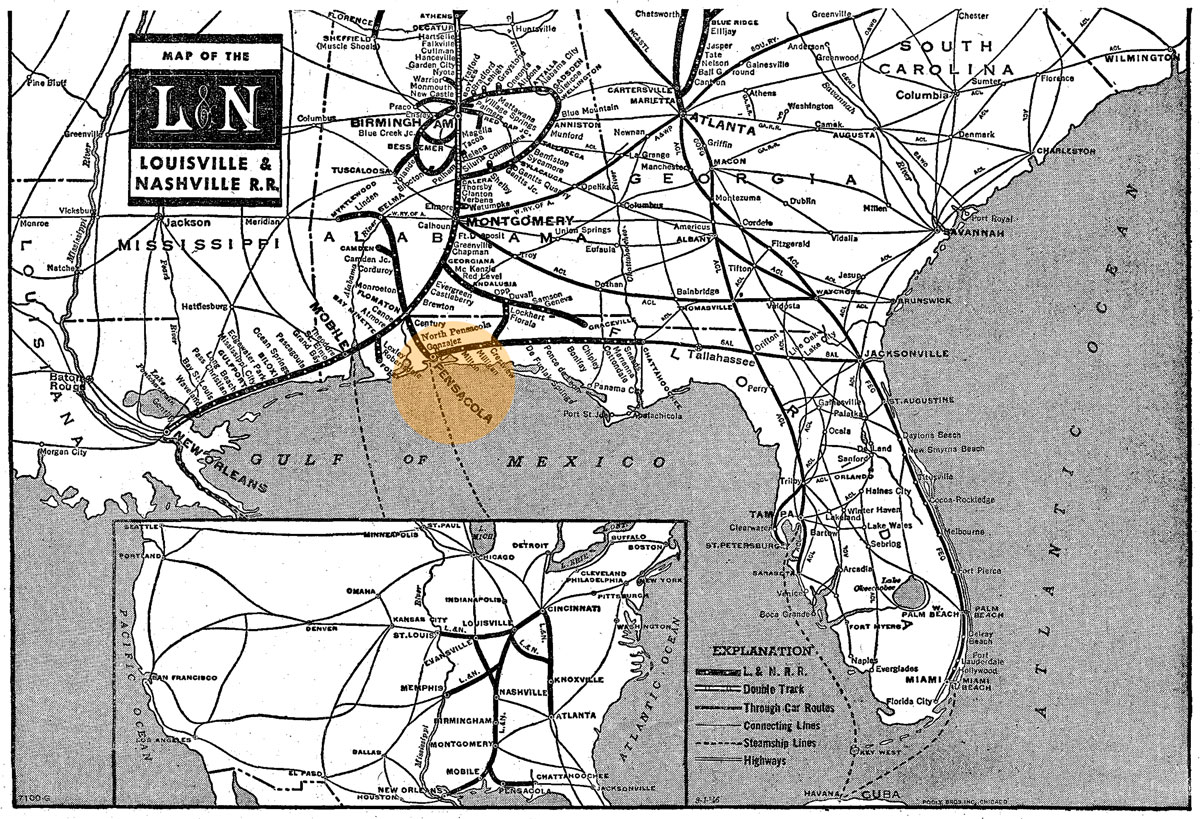
1948 Official Guide map / collection


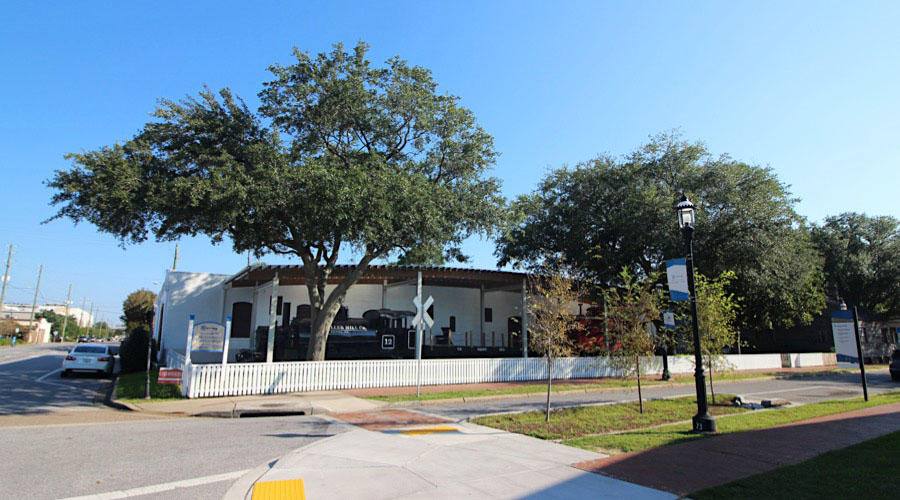
Pensacola, Fl / Sep 2024 / RWH
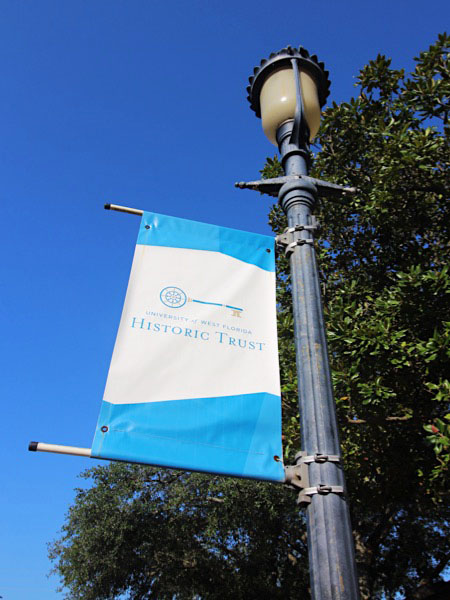
Sep 2024 / RWH
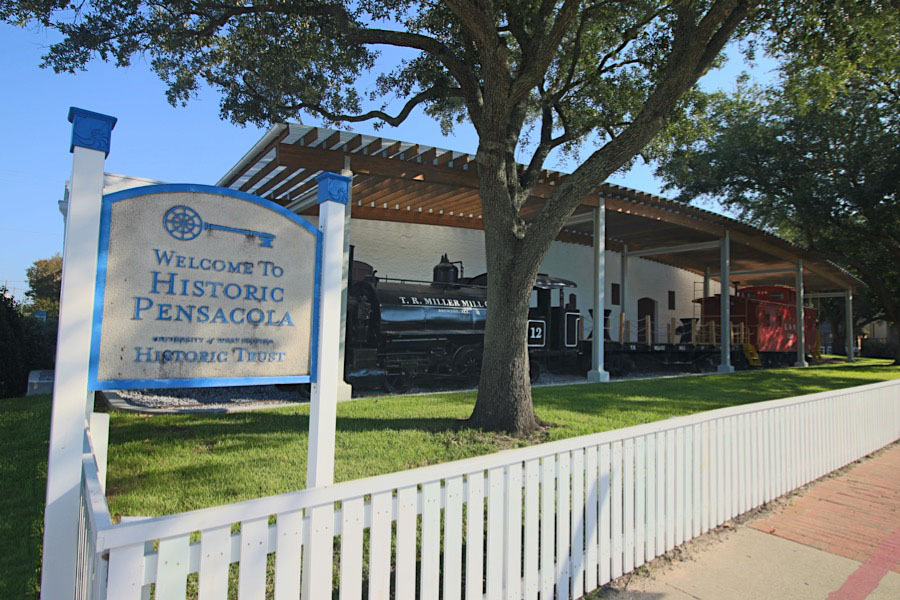
Pensacola, Fl / Sep 2024 / RWH

Click to see the Pensacola Museum of Industry plotted on a Google Maps page
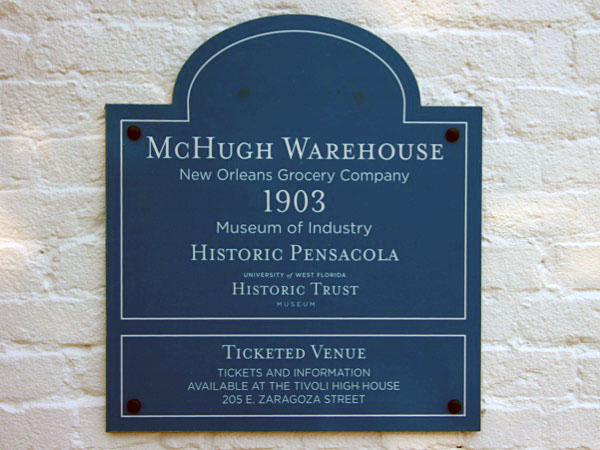
Sep 2024 / RWH
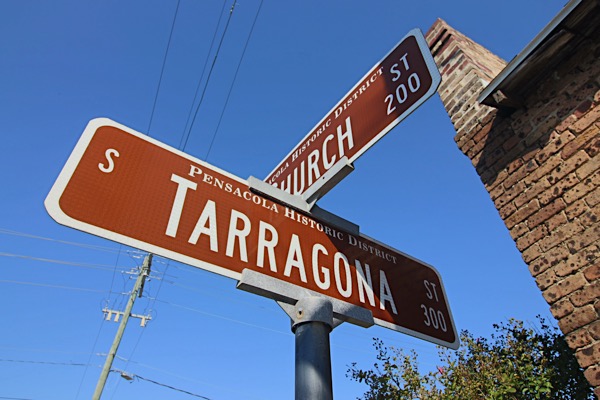
Sep 2024 / RWH
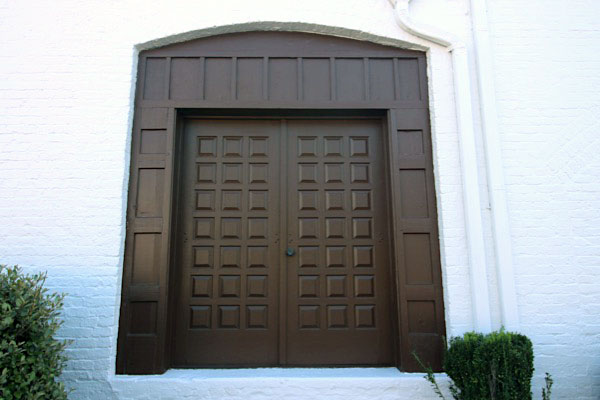
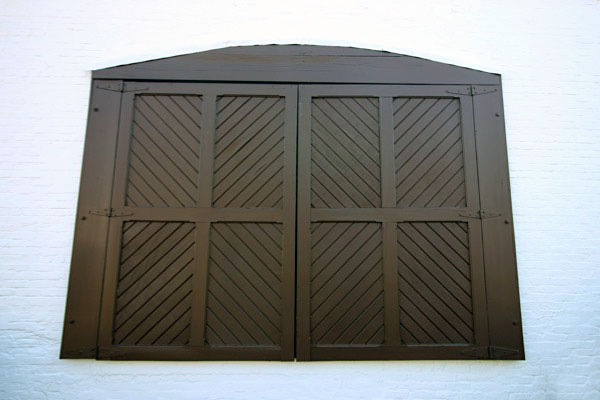
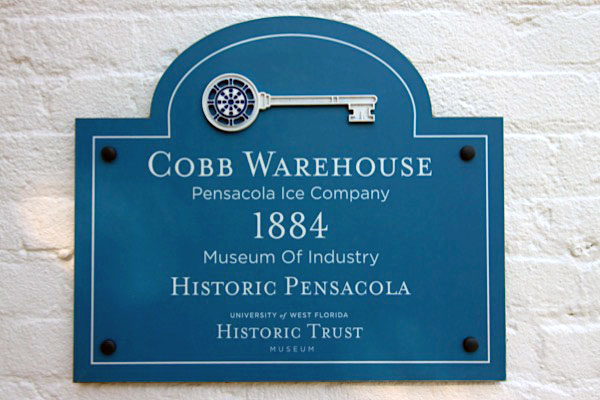
Sep 2024 / RWH

Sep 2024 / RWH
Train Pavilion
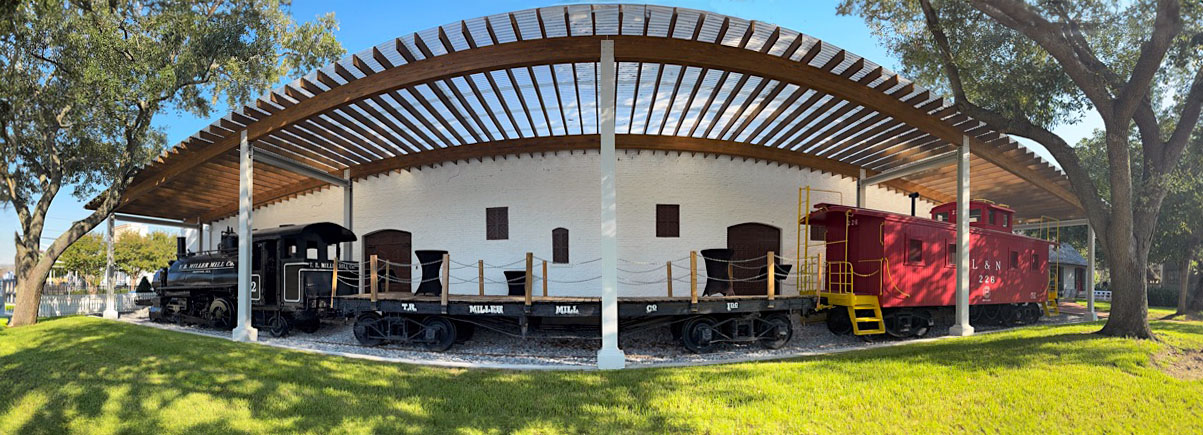
Pensacola, Fl / Sep 2024 / RWH
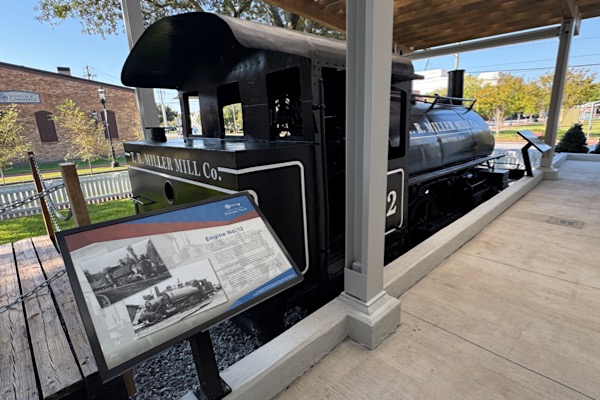
Pensacola, Fl / Sep 2024 / RWH
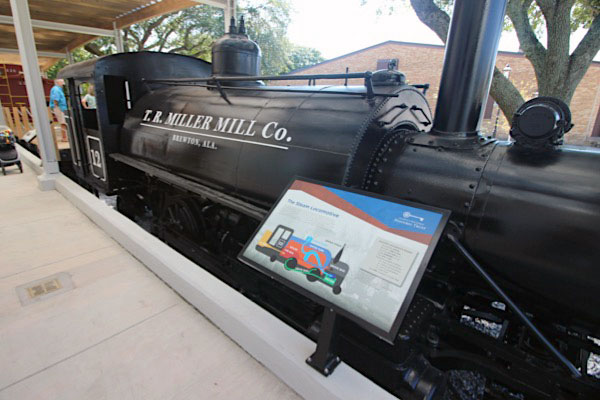
Pensacola, Fl / Sep 2024 / RWH
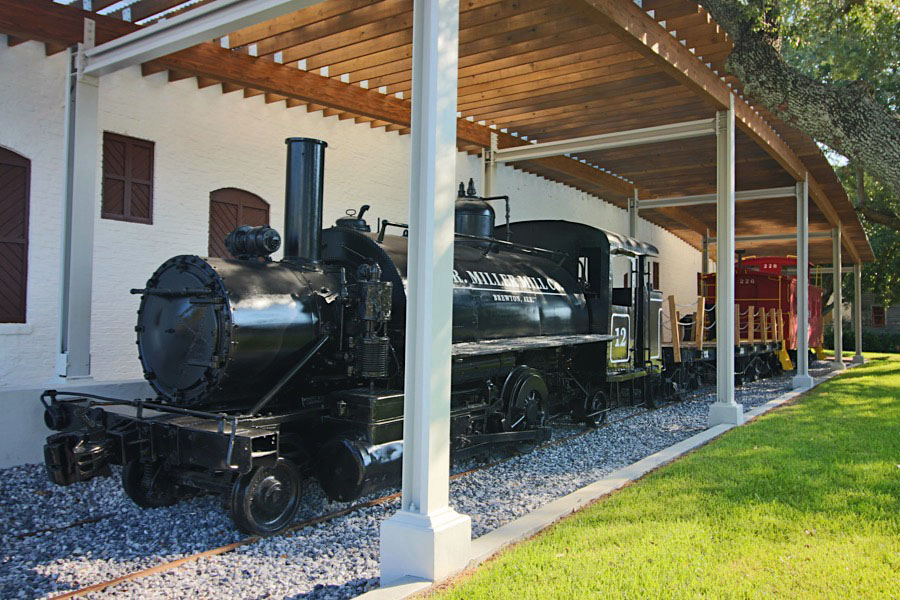
Pensacola, Fl / Sep 2024 / RWH
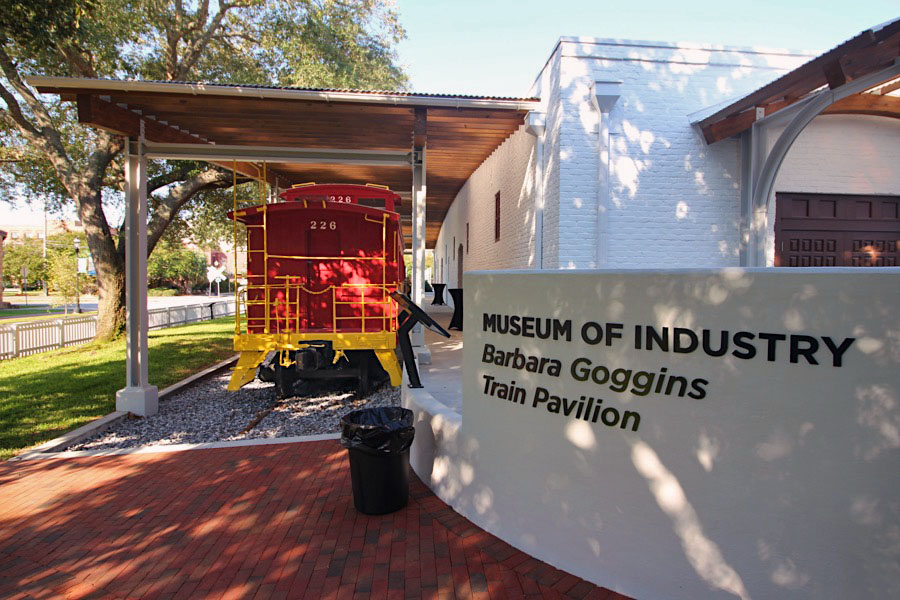
Pensacola, Fl / Sep 2024 / RWH
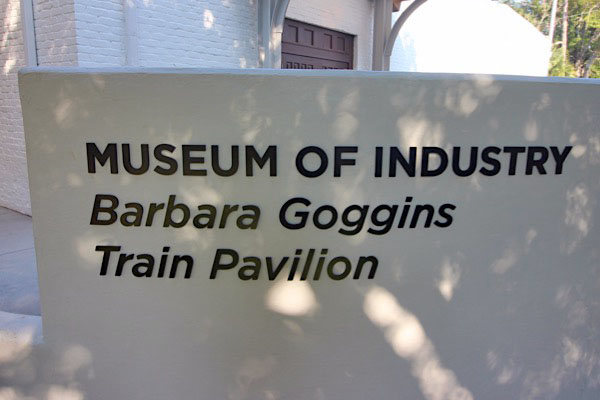
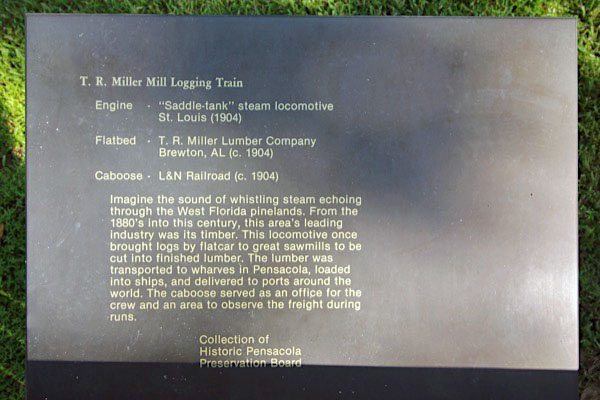
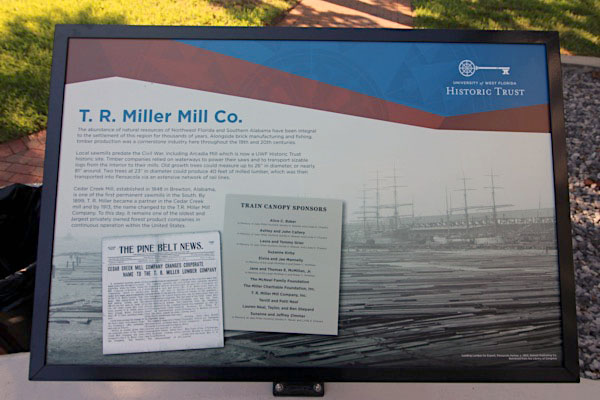
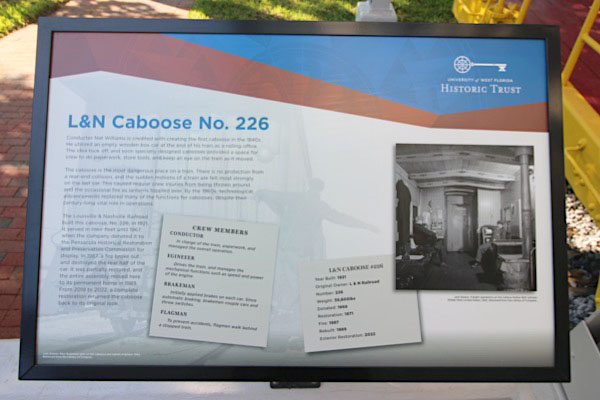

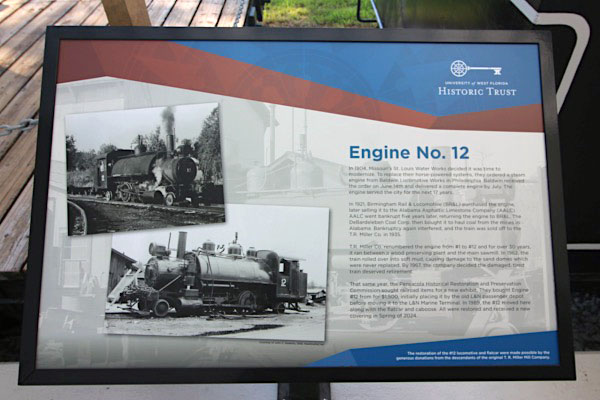
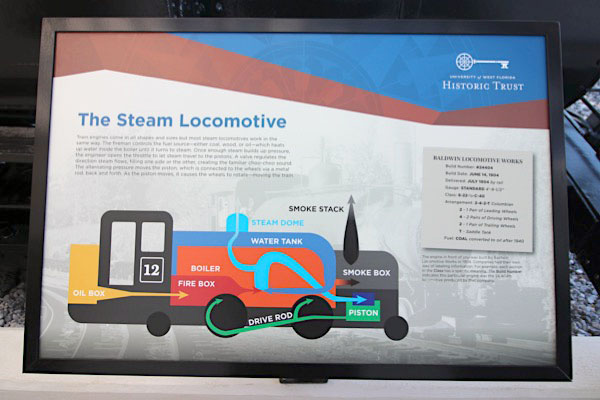
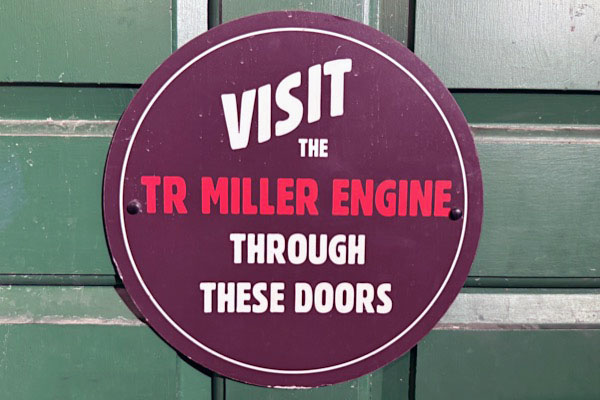
Sep 2024 / RWH
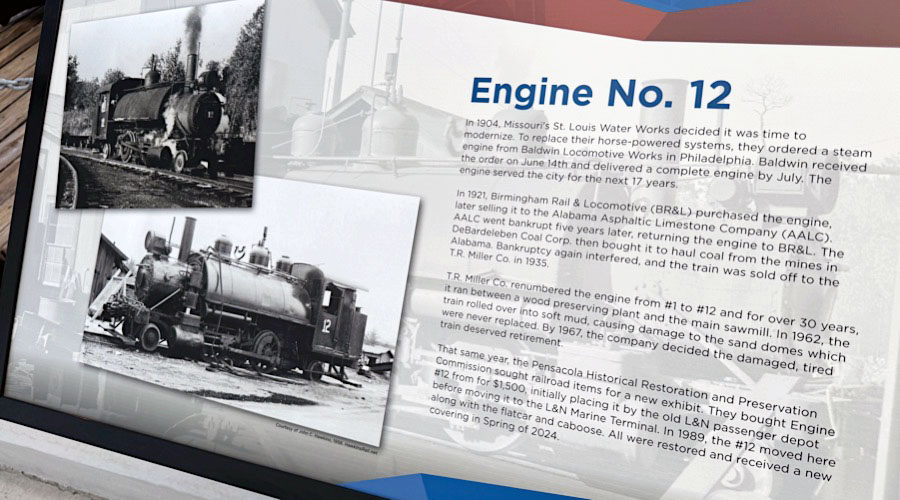
Sep 2024 / RWH
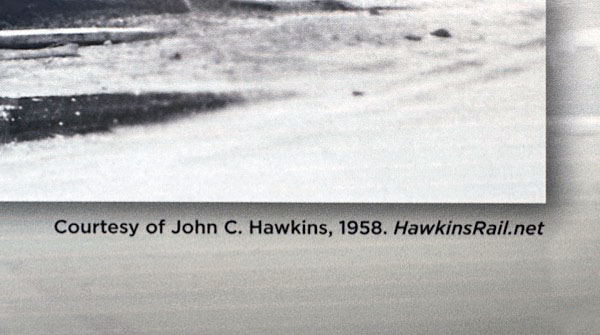
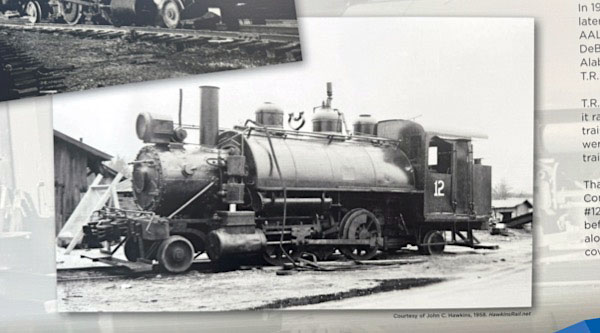
Sep 2024 / RWH

Pensacola, Fl / Sep 2024 / RWH
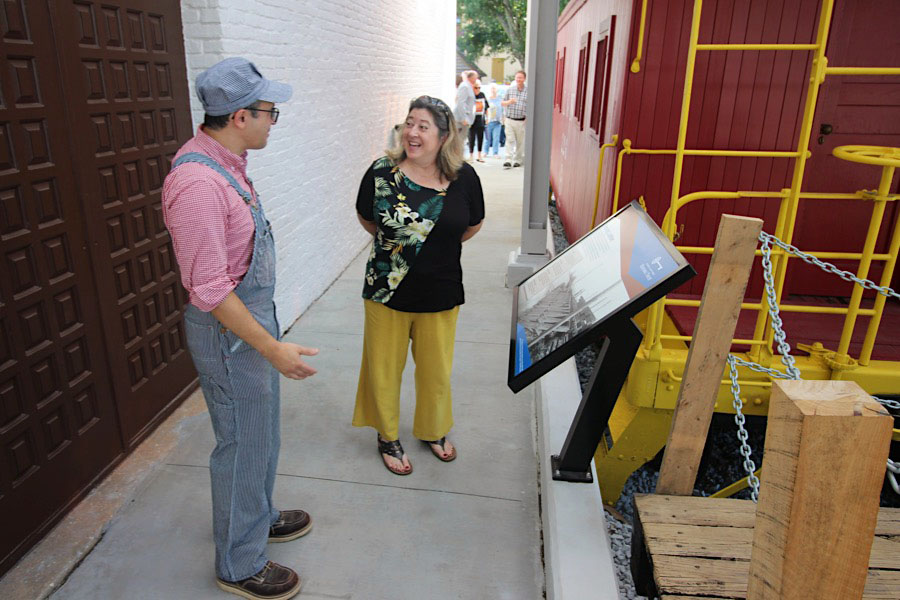
Pensacola, Fl / Sep 2024 / RWH
 Train Pavilion Dedication
Train Pavilion Dedication
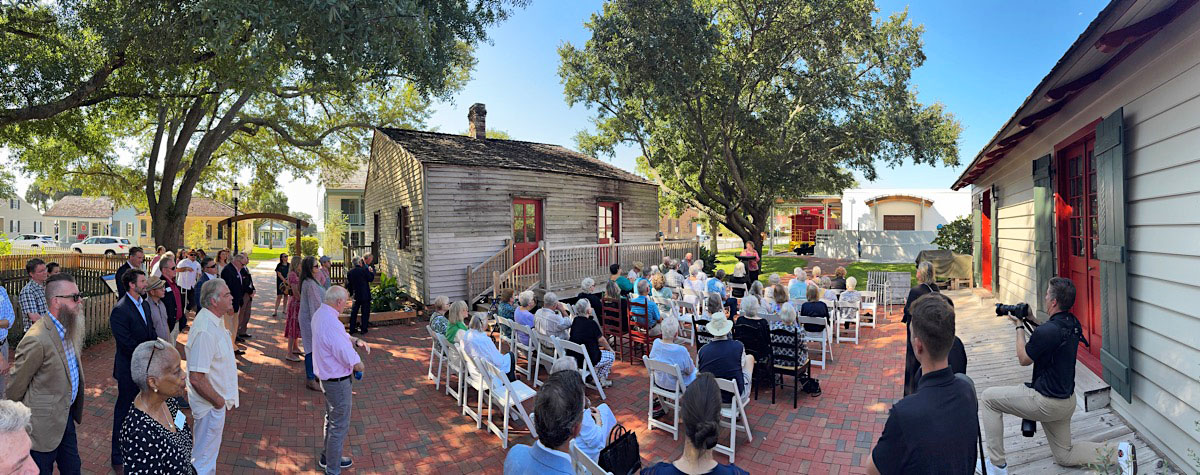
Pensacola, Fl / Sep 2024 / RWH

 I've said it for years: Old machines always mean new friends. I'm so grateful to Ross Pristera, historic preservationist at the University of West Florida Historic Trust, who reached out to me via email when he found our photos of T. R. Miller Mill steamer #12. Ross spearheaded the recent cosmetic restoration of the train display outside the Pensacola Museum of Industry, including making certain the whole thing remains covered under a brand new pavilion. That Ross also loves trains is obvious in the great care given to both Baldwin #12 and the now-renovated L&N wooden caboose onsite. Both look fantastic now, buffed to shine. I should know, because Ross was kind enough to invite me to the ribbon-cutting ceremony for the new Barbara Goggins Train Pavilion. I was certainly not going to miss a big party for the only "Columbian" steamer I've ever seen! It was a wonderful event, filling up the courtyard on the Industry Museum grounds. One of the speakers turned out to be Thomas E. McMillan, Jr. (below), descendant T. R. Miller himself and one of several family-owners of the modern T. R. Miller operation. I met Tom when my brother and I visited the Brewton facility back in 2019 to present them some photos. Here in Pensacola, he recounted the history of how an Alabama steamer landed in a Florida port after retirement. I say, long live Mr. Rucker's little plant switcher! Honestly, she's never looked better. Thanks Ross.
I've said it for years: Old machines always mean new friends. I'm so grateful to Ross Pristera, historic preservationist at the University of West Florida Historic Trust, who reached out to me via email when he found our photos of T. R. Miller Mill steamer #12. Ross spearheaded the recent cosmetic restoration of the train display outside the Pensacola Museum of Industry, including making certain the whole thing remains covered under a brand new pavilion. That Ross also loves trains is obvious in the great care given to both Baldwin #12 and the now-renovated L&N wooden caboose onsite. Both look fantastic now, buffed to shine. I should know, because Ross was kind enough to invite me to the ribbon-cutting ceremony for the new Barbara Goggins Train Pavilion. I was certainly not going to miss a big party for the only "Columbian" steamer I've ever seen! It was a wonderful event, filling up the courtyard on the Industry Museum grounds. One of the speakers turned out to be Thomas E. McMillan, Jr. (below), descendant T. R. Miller himself and one of several family-owners of the modern T. R. Miller operation. I met Tom when my brother and I visited the Brewton facility back in 2019 to present them some photos. Here in Pensacola, he recounted the history of how an Alabama steamer landed in a Florida port after retirement. I say, long live Mr. Rucker's little plant switcher! Honestly, she's never looked better. Thanks Ross.

Pensacola, Fl / Sep 2024 / RWH
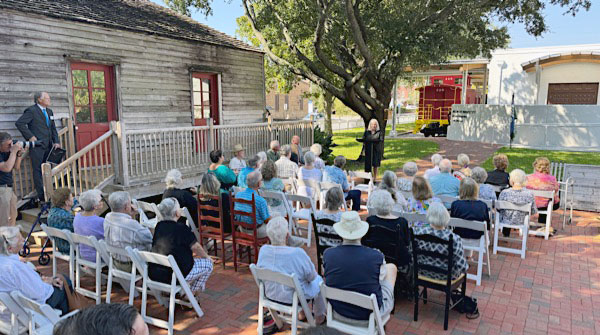
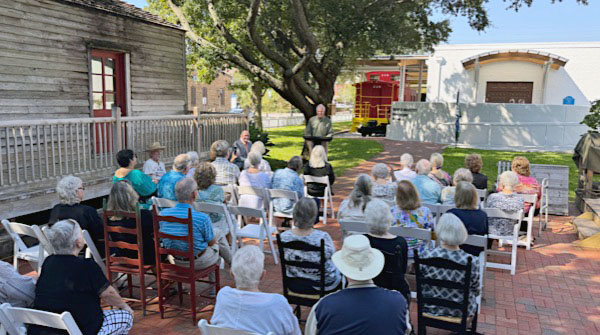
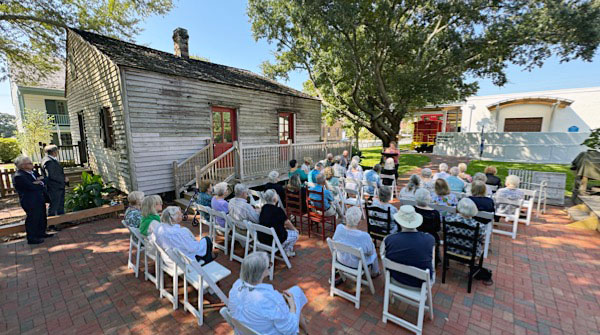
Pensacola, Fl / Sep 2024 / RWH
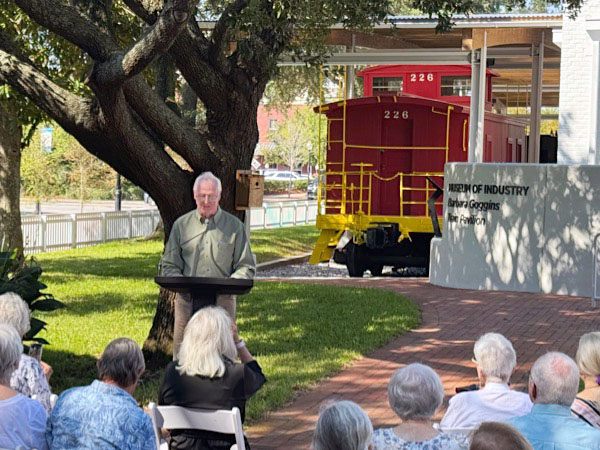
Sep 2024 / RWH

Sep 2024 / RWH

Pensacola, Fl / Sep 2024 / RWH
 Miller Mill #12
Miller Mill #12

 UNCOMMON or UNUSUAL locomotive
UNCOMMON or UNUSUAL locomotive
T R Miller Mill Company #1

T R Miller Mill Company #12
Brewton, Al / Feb 1961 / JCH


T R Miller Mill Company #12
to Birmingham Rail & Locomotive #1666
to Alabama Rock & Ashpalt #1
to Birmingham Rail & Locomotive #1740
to Debardeleben Coal Corp #1
to T R Miller Mill Company #12
to Pensacola Marine Terminal display
to Pensacola Museum of Industry
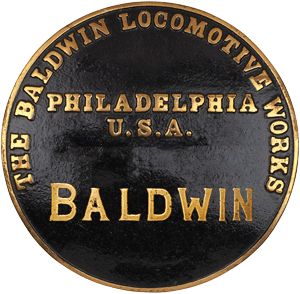

this locomotive also posted in T R Miller Mill Company
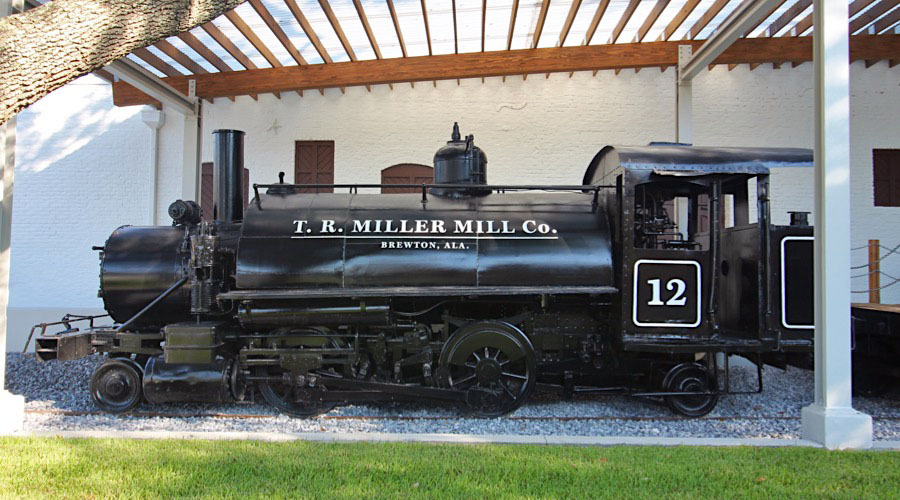
Pensacola, Fl / Sep 2024 / RWH
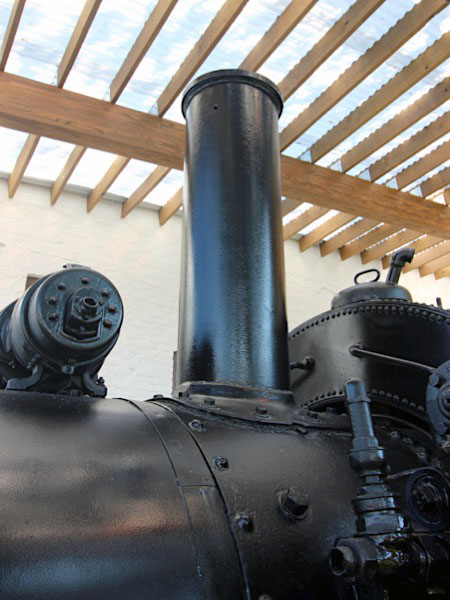
Sep 2024 / RWH
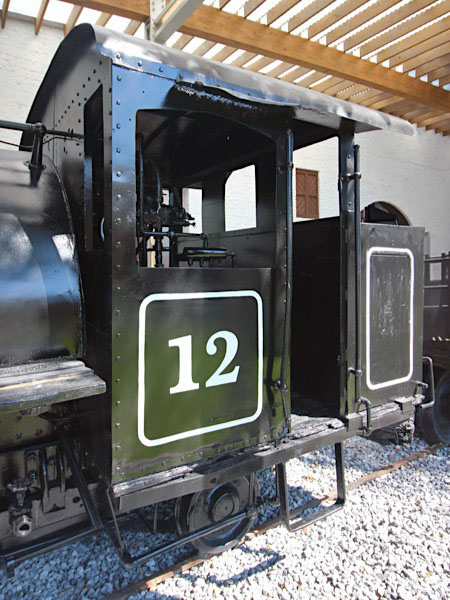
Sep 2024 / RWH
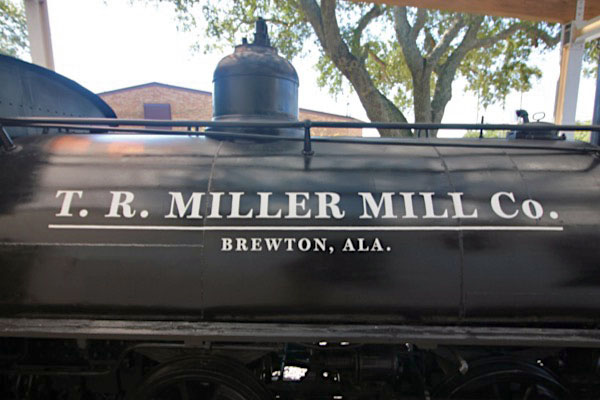
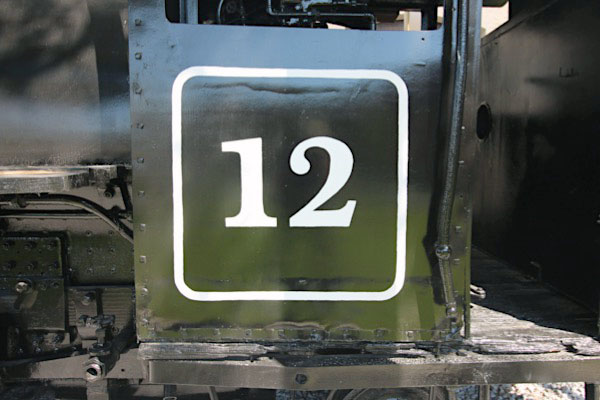
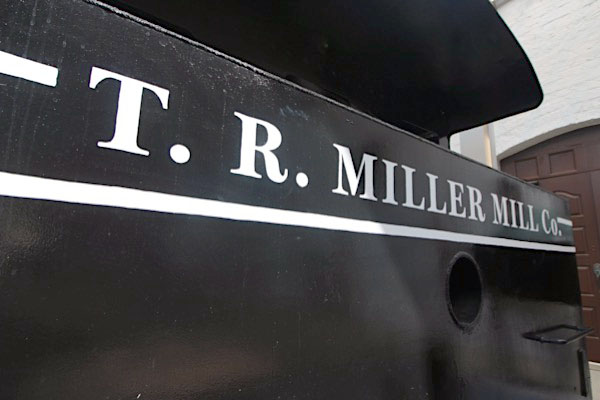

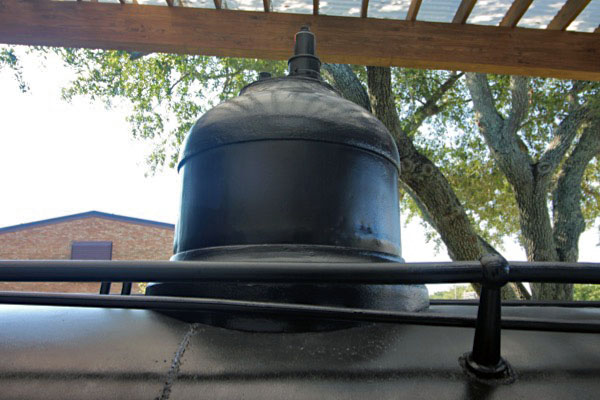
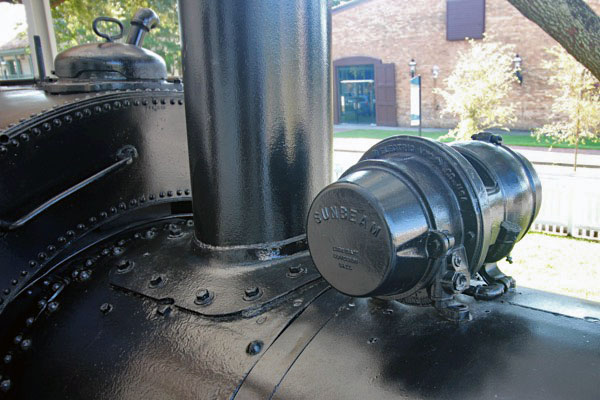
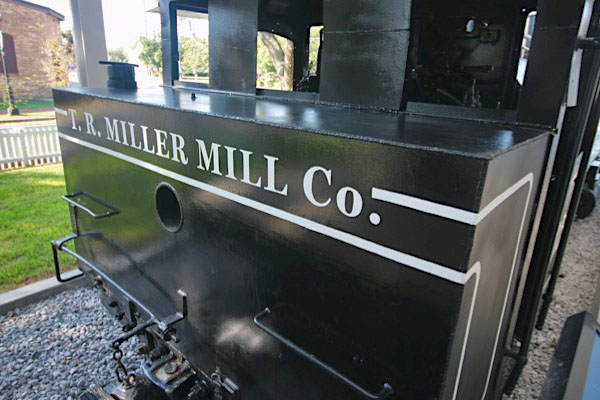


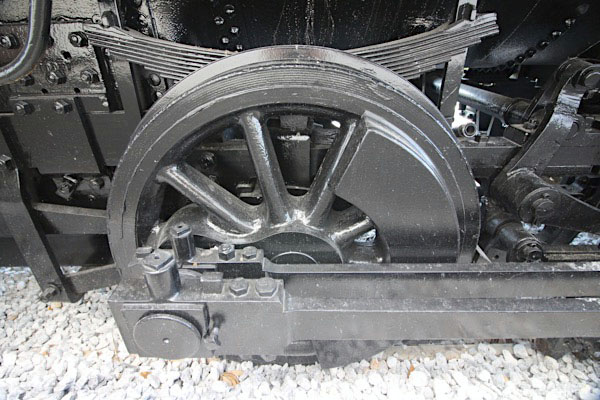
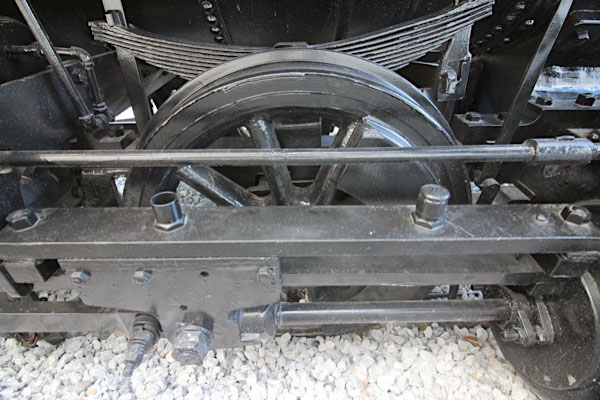
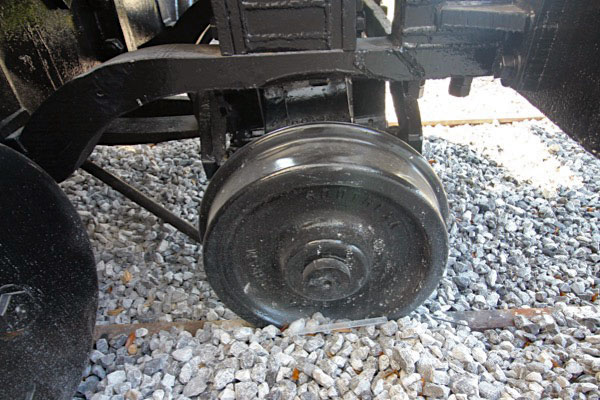
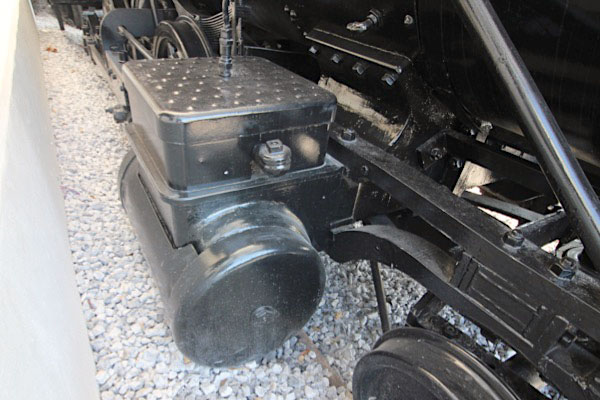
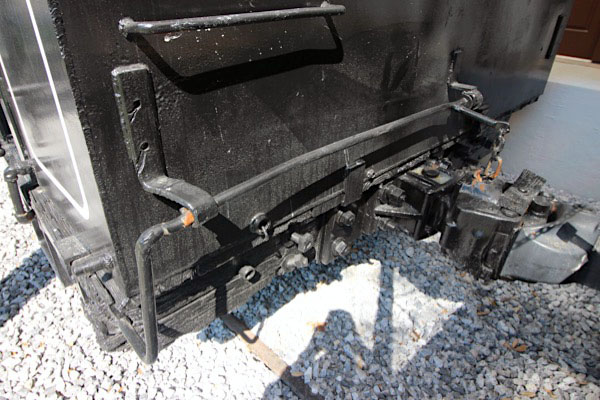

Sep 2024 / RWH
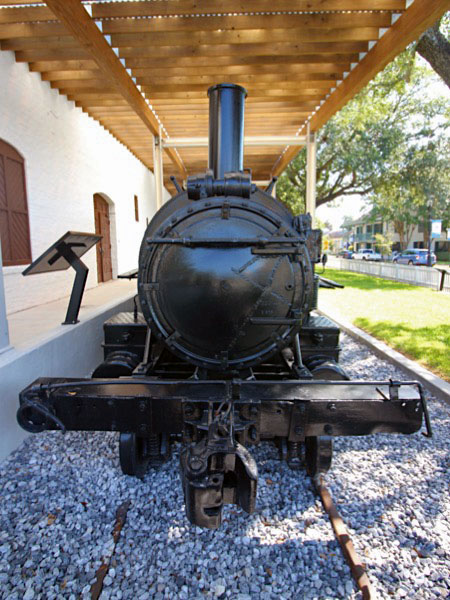
Sep 2024 / RWH

Pensacola, Fl / Sep 2024 / RWH
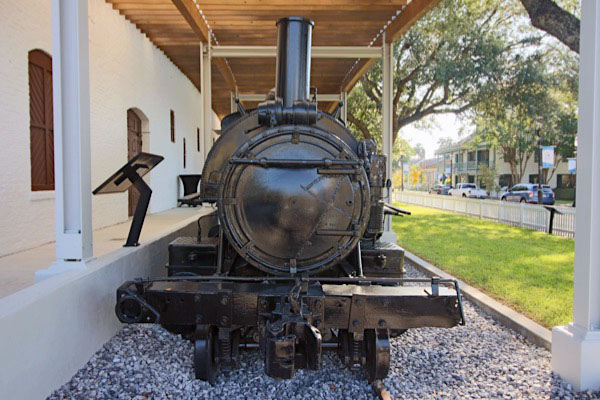
Pensacola, Fl / Sep 2024 / RWH
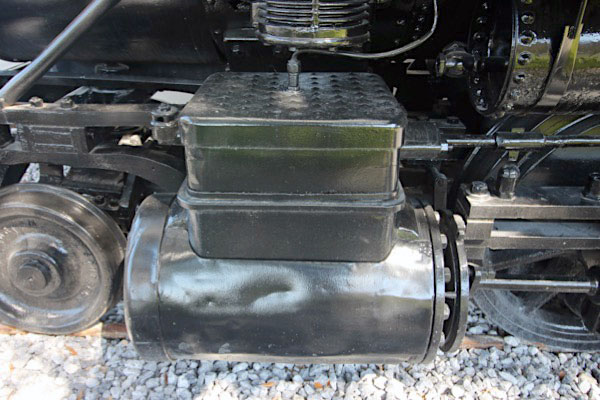
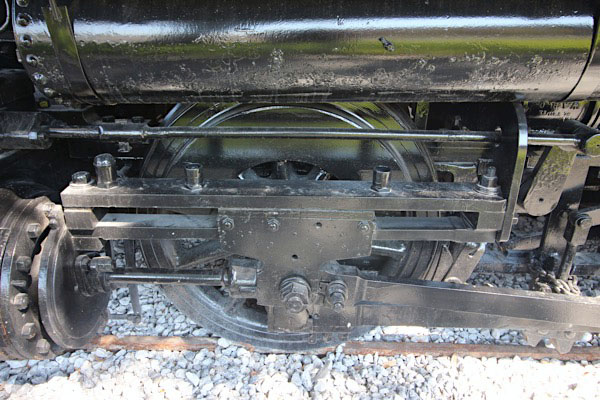
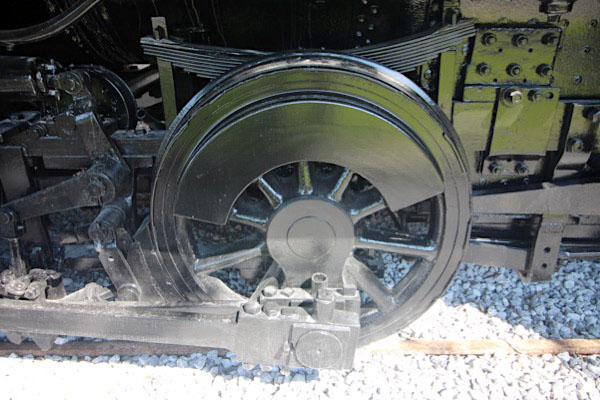
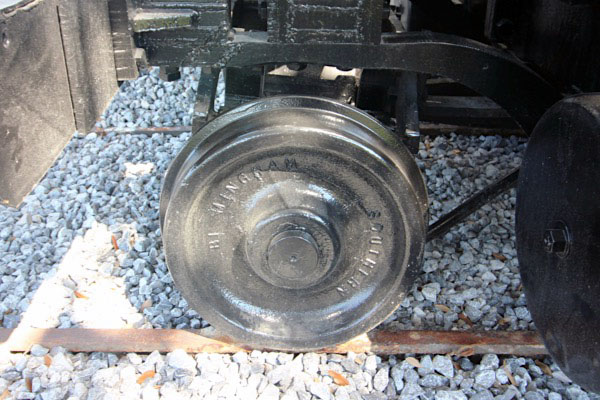
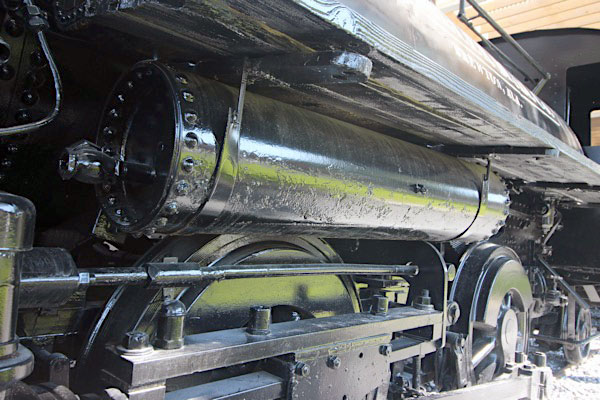
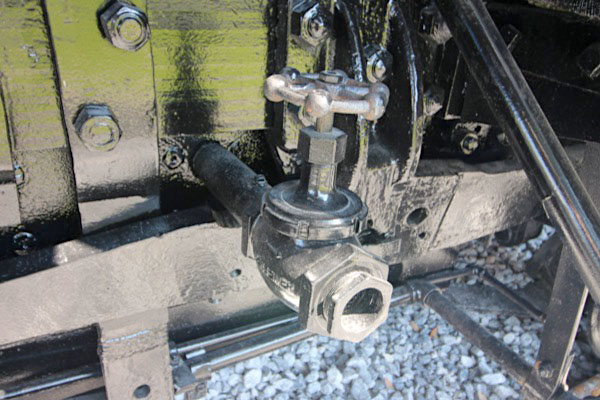

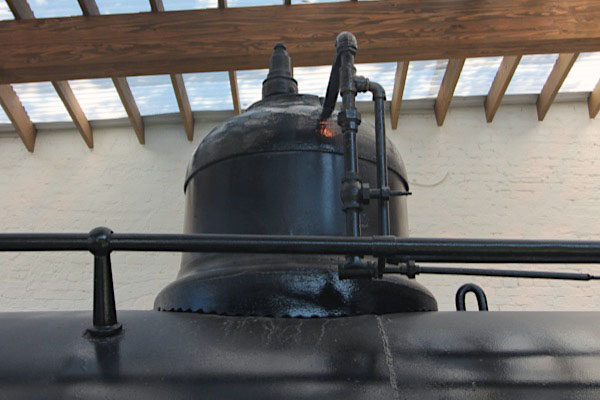
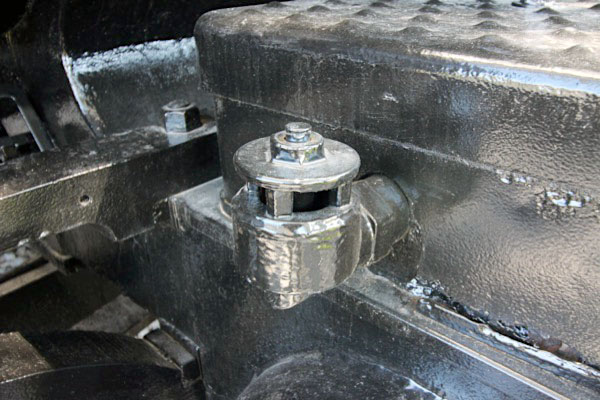
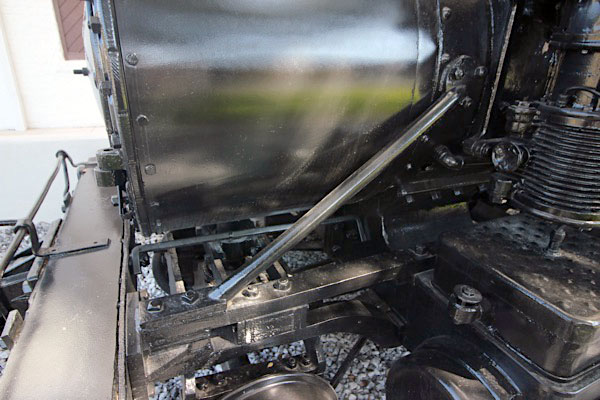

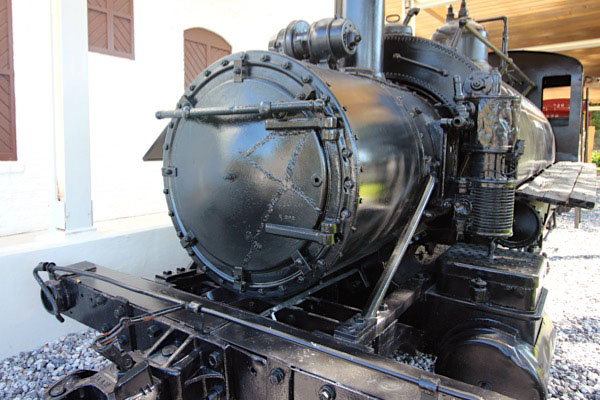
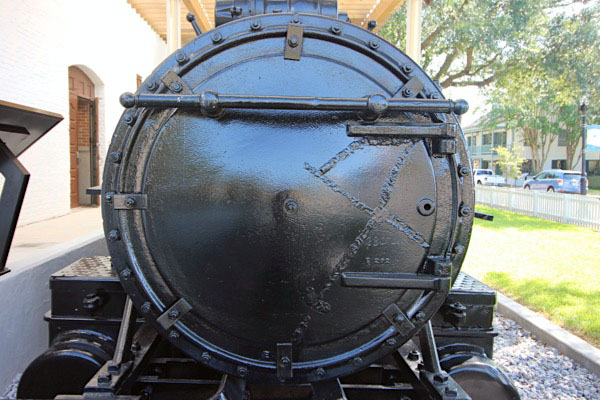
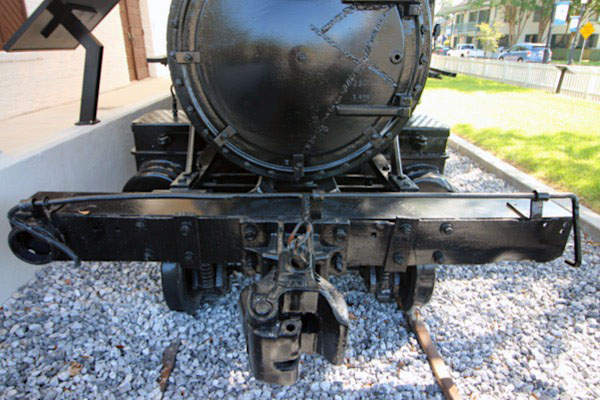
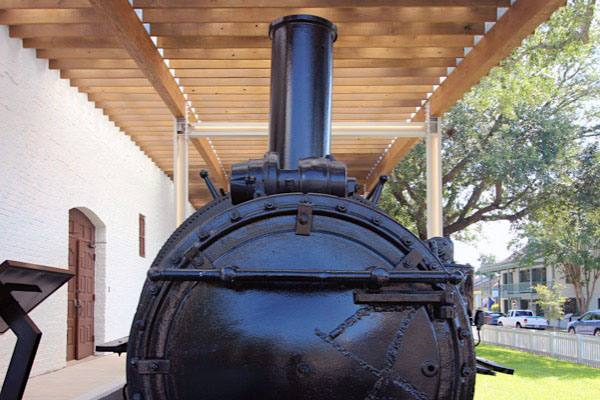
Sep 2024 / RWH

Sep 2024 / RWH


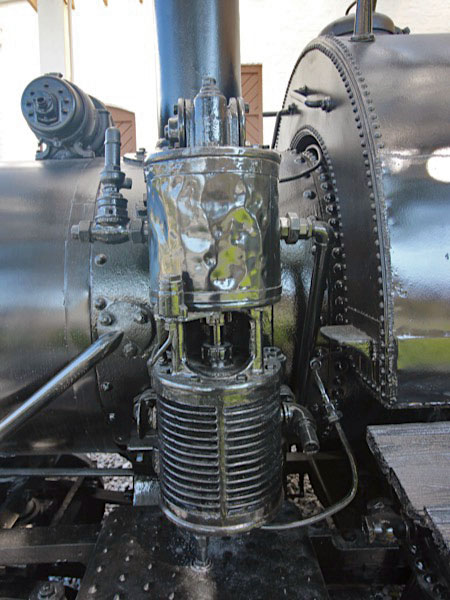

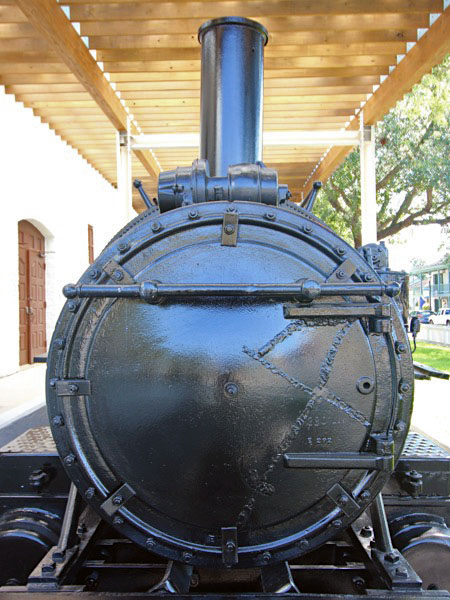
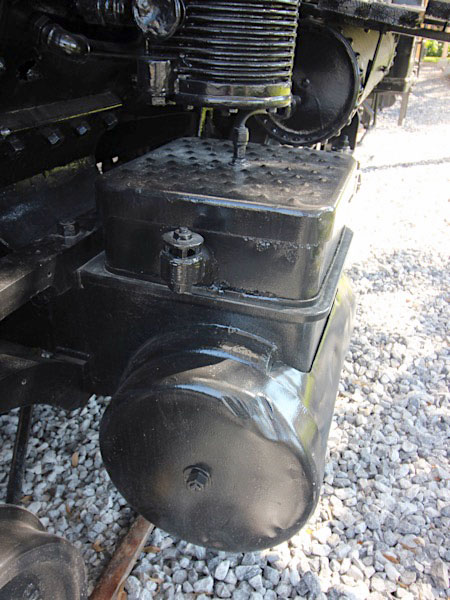
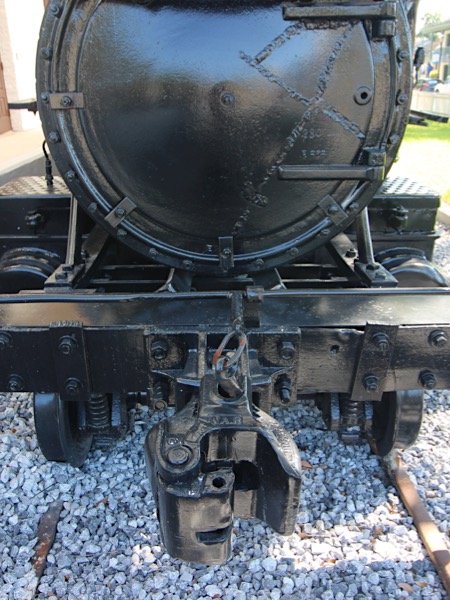
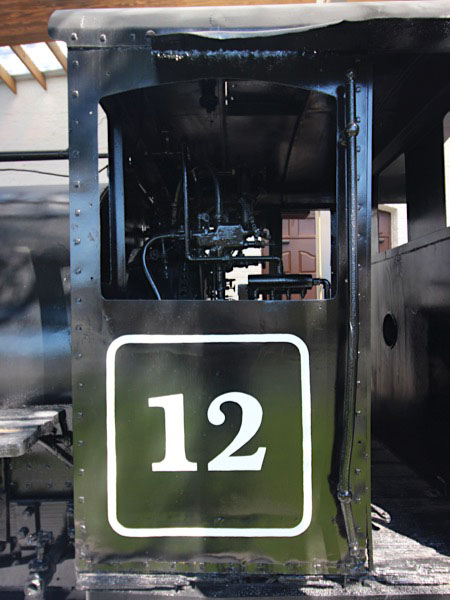
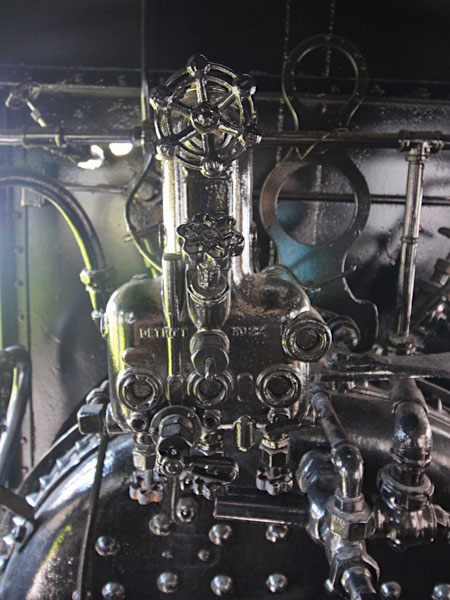
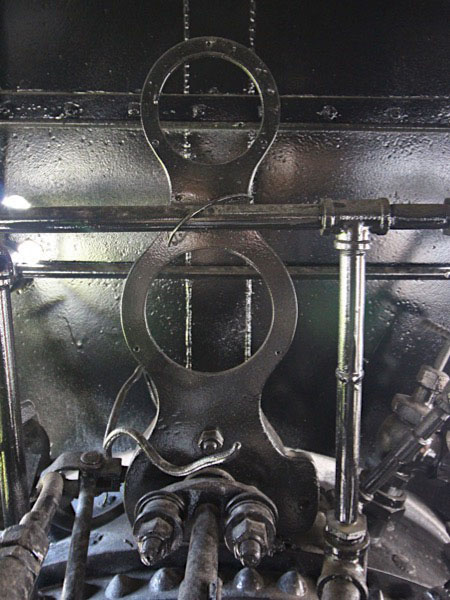
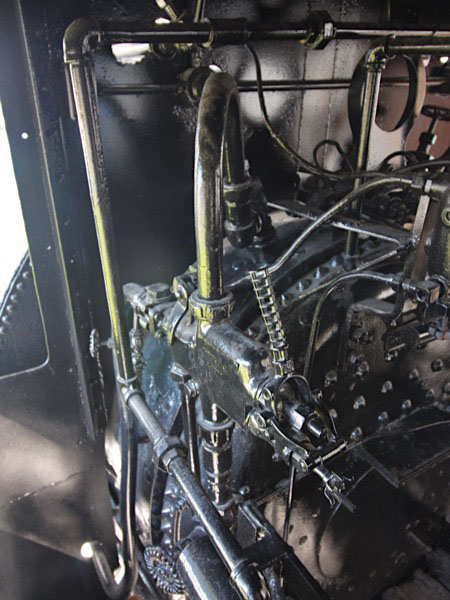
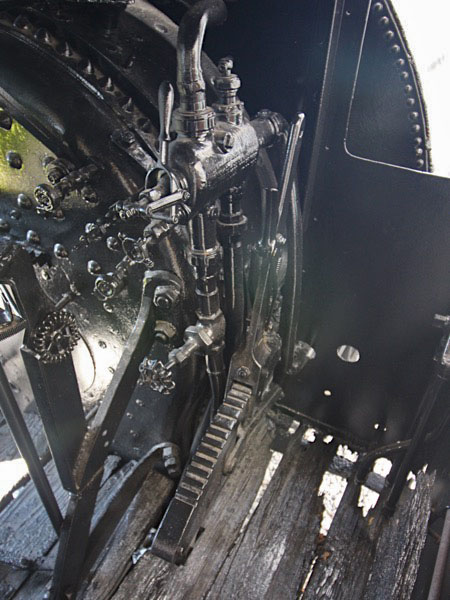
Sep 2024 / RWH

Brewton, Al / Dec 1958 / collection

See also our complete T. R. Miller Mill Company featured scrapbook in Industrials
Rolling Stock
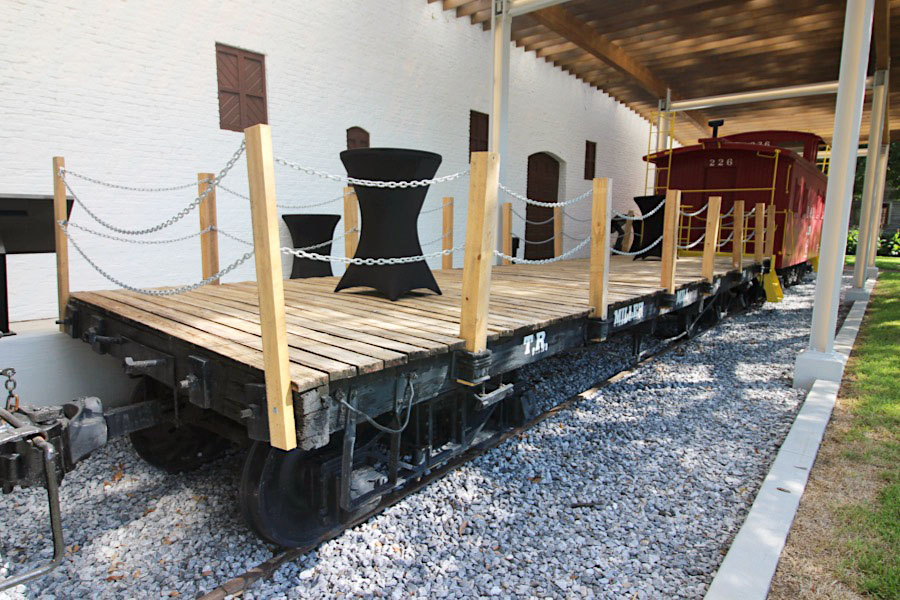
Pensacola, Fl / Sep 2024 / RWH
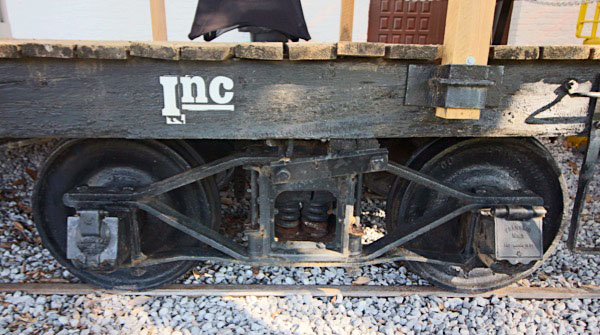
Sep 2024 / RWH
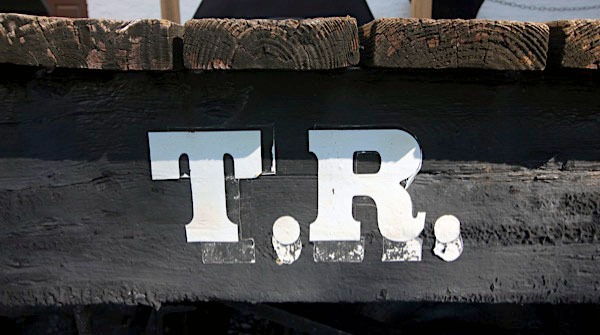
Sep 2024 / RWH
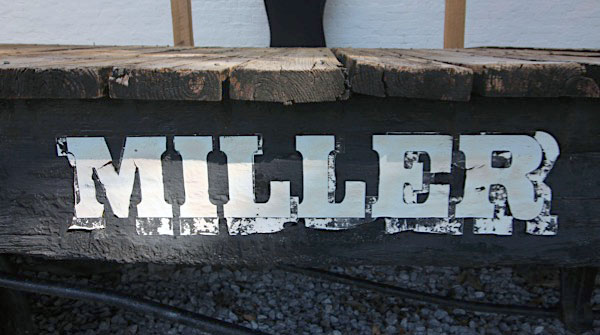
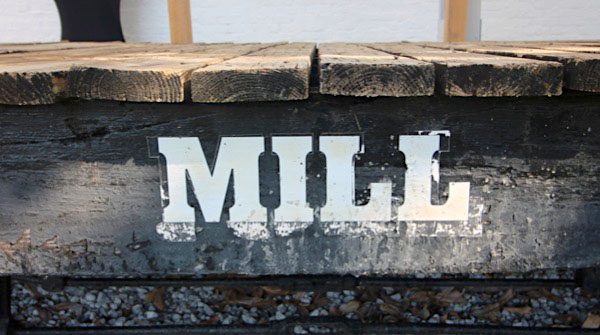

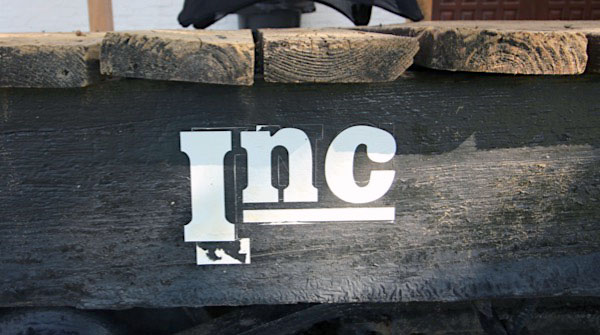
Sep 2024 / RWH
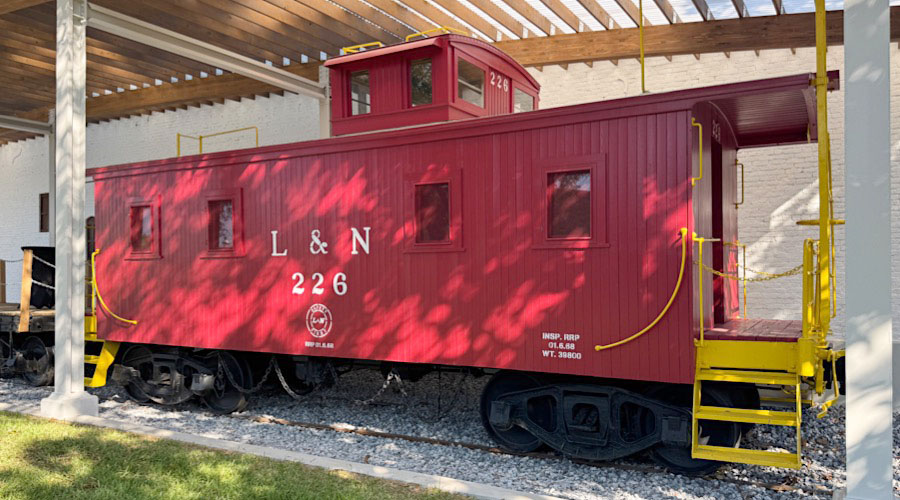
Louisville & Nashville #226
Sep 2024 / RWH

Sep 2024 / RWH
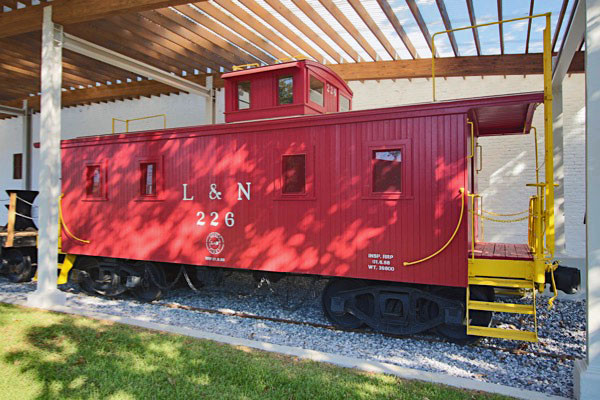
Sep 2024 / RWH
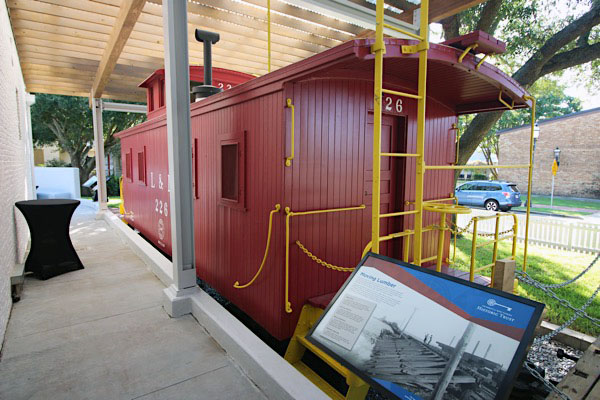
Sep 2024 / RWH
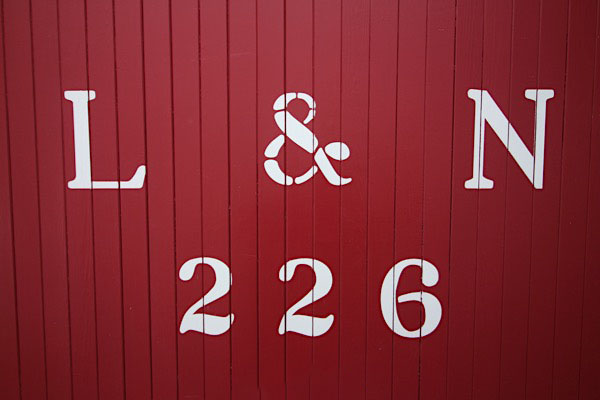
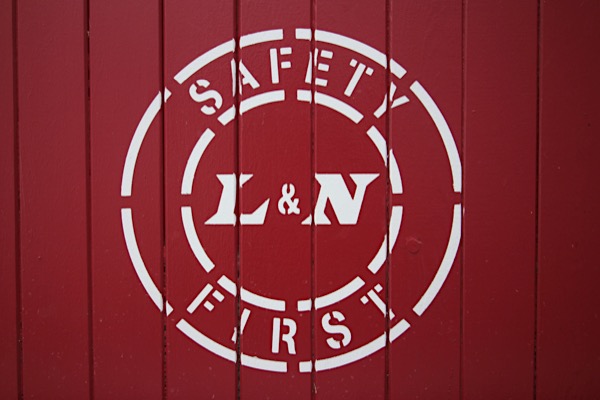
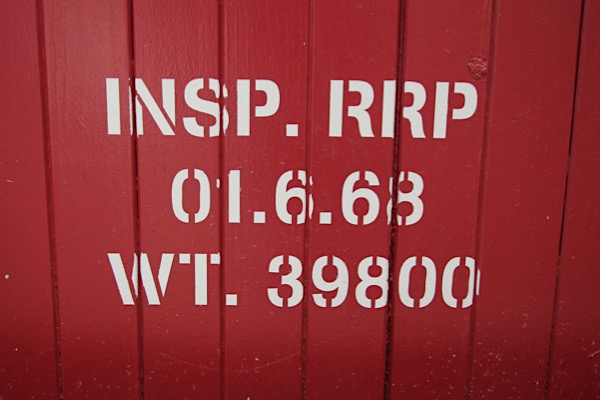
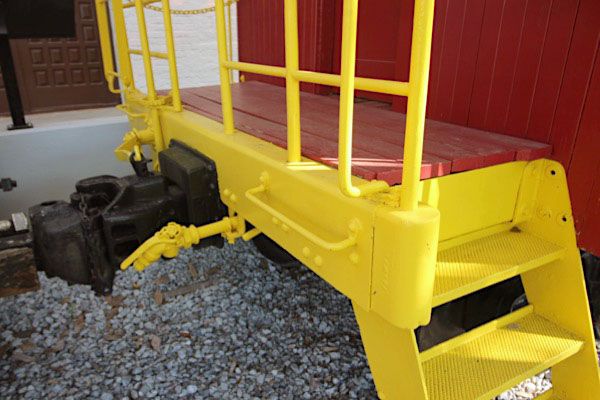
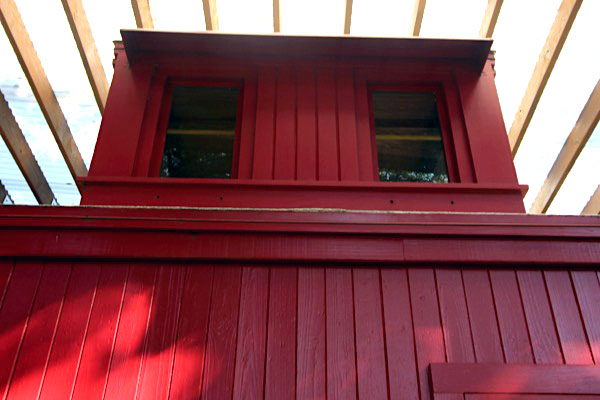
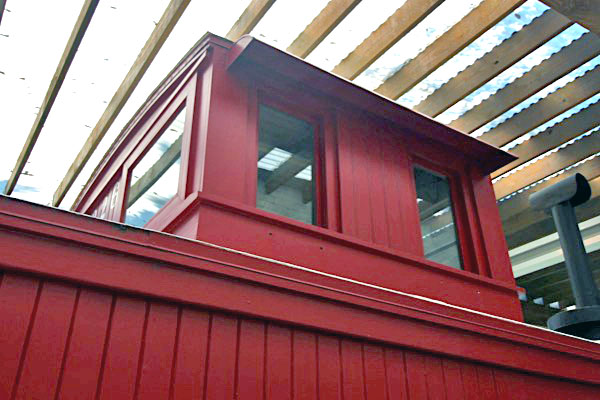
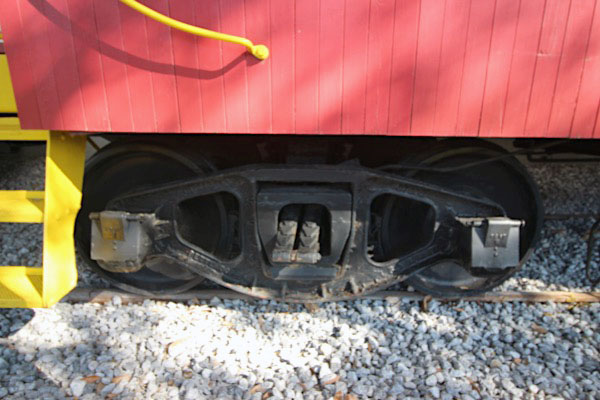
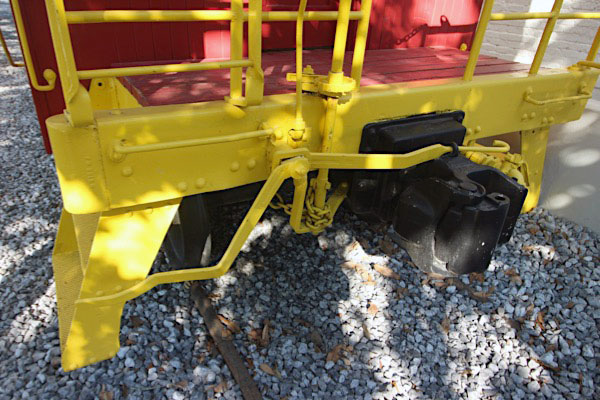
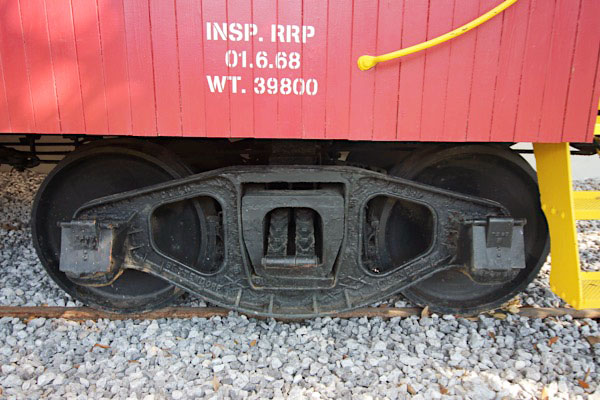
Sep 2024 / RWH
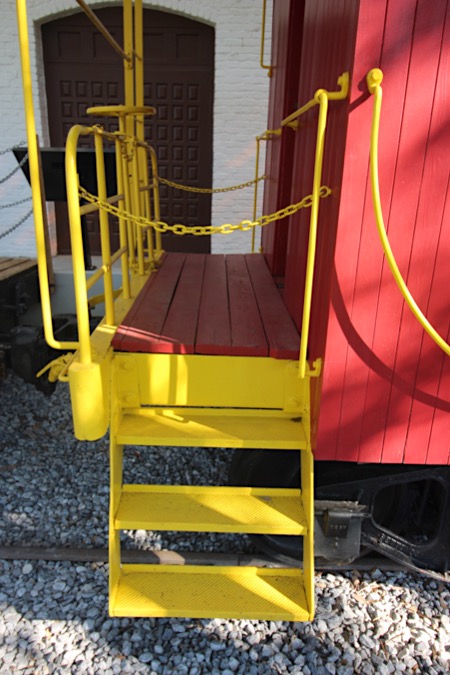
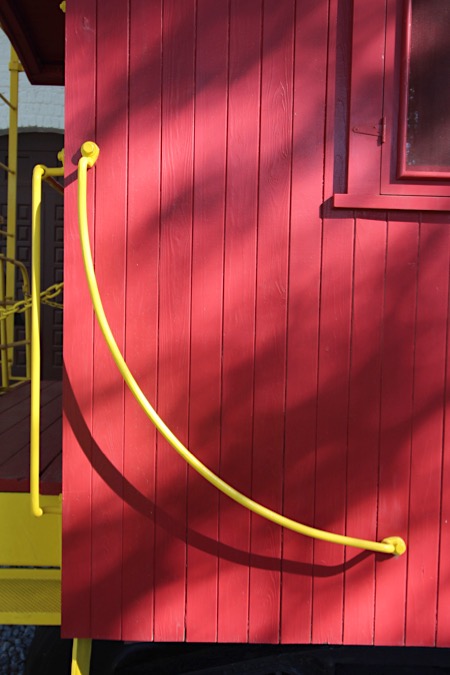
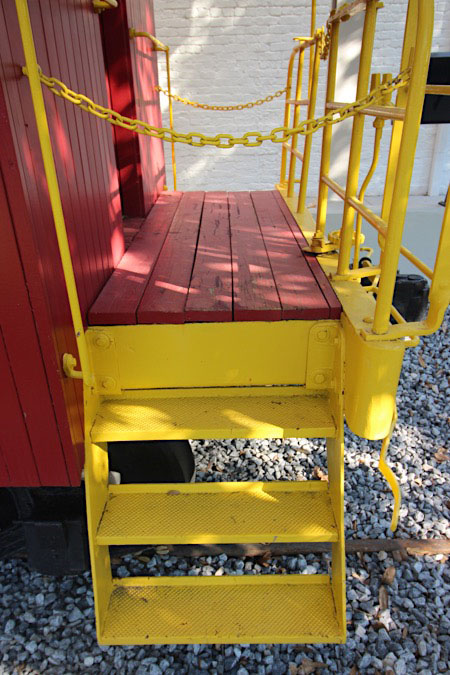
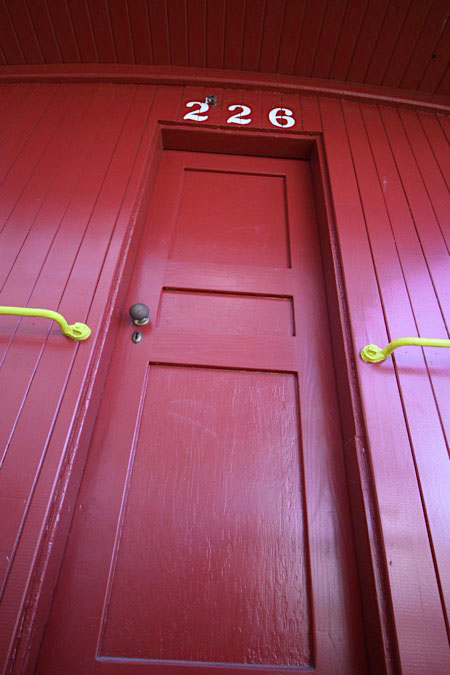
Sep 2024 / RWH
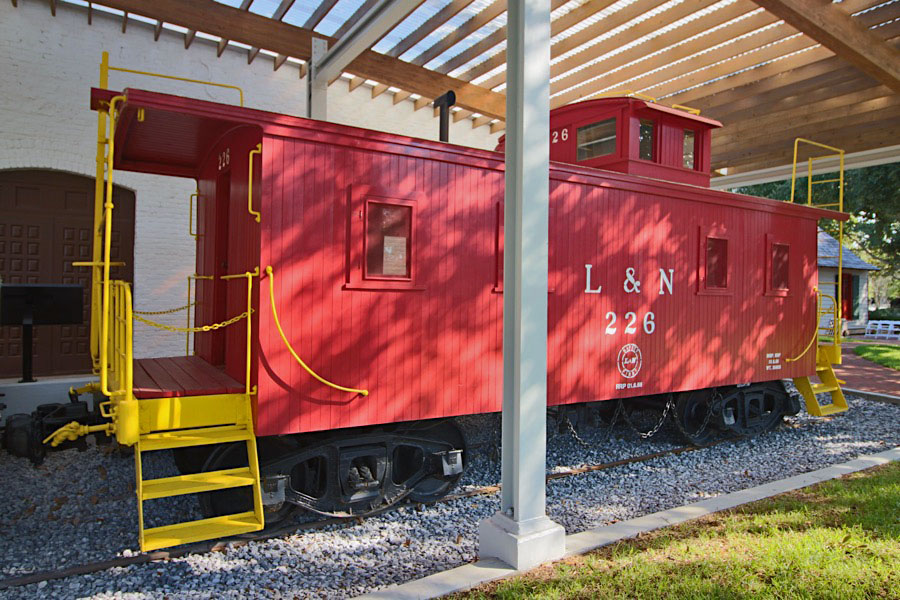
Sep 2024 / RWH

See also our complete Louisville & Nashville Fallen Flag scrapbook in Mainlines
 L&N Marine Terminal
L&N Marine Terminal
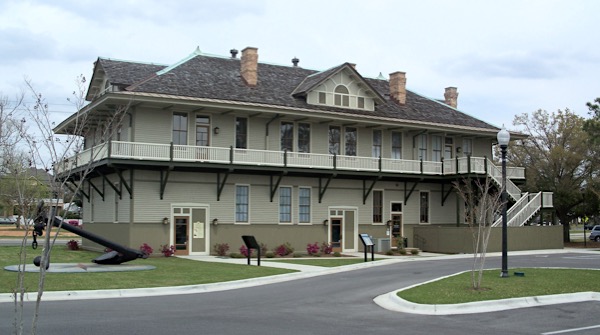
 rior to their relocation to the Pensacola Museum of Industry (above), T. R. Miller Mill #12, the Miller Mill flatcar, and Louisville & Nashville caboose #226 were all on display outdoors at the L&N Marine Terminal Building, at the foot of East Main Street in Pensacola. During that era, the wooden caboose was severely damaged by fire. Also on display then was an Alger-Sullivan Sawmill wooden boxcar, since relocated to the James Houston Jones Historic Park in Century, Florida.
rior to their relocation to the Pensacola Museum of Industry (above), T. R. Miller Mill #12, the Miller Mill flatcar, and Louisville & Nashville caboose #226 were all on display outdoors at the L&N Marine Terminal Building, at the foot of East Main Street in Pensacola. During that era, the wooden caboose was severely damaged by fire. Also on display then was an Alger-Sullivan Sawmill wooden boxcar, since relocated to the James Houston Jones Historic Park in Century, Florida.

Pensacola, Fl / 1980s / JCH

Pensacola, Fl / 1980s / JCH
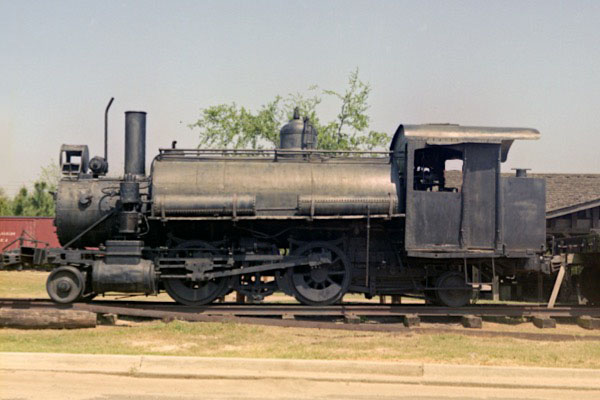
Pensacola, Fl / 1980s / JCH

Pensacola, Fl / 1980s / JCH
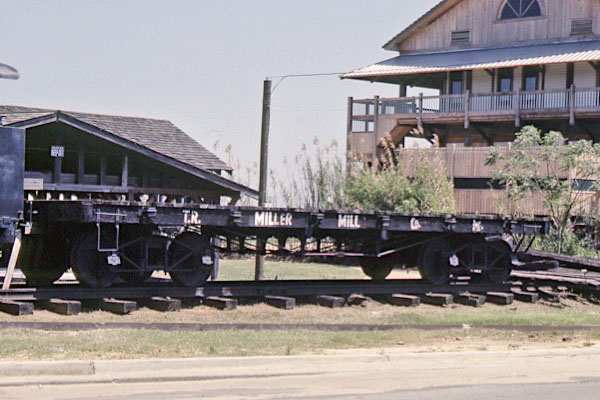
Pensacola, Fl / 1980s / JCH

Pensacola, Fl / 1980s / JCH

Pensacola, Fl / 1980s / JCH
Exhibits
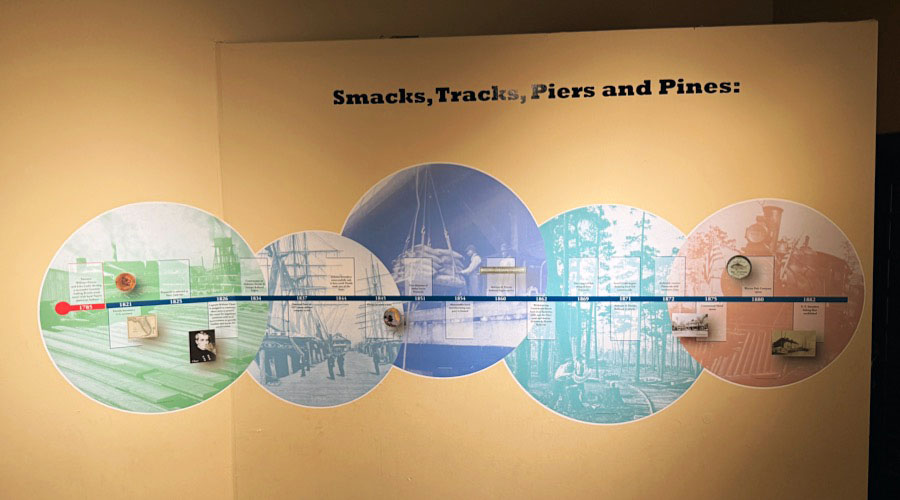
Sep 2024 / RWH
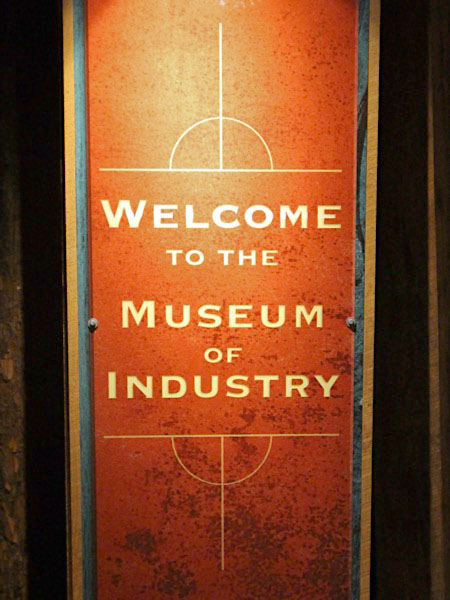
Sep 2024 / RWH

Sep 2024 / RWH
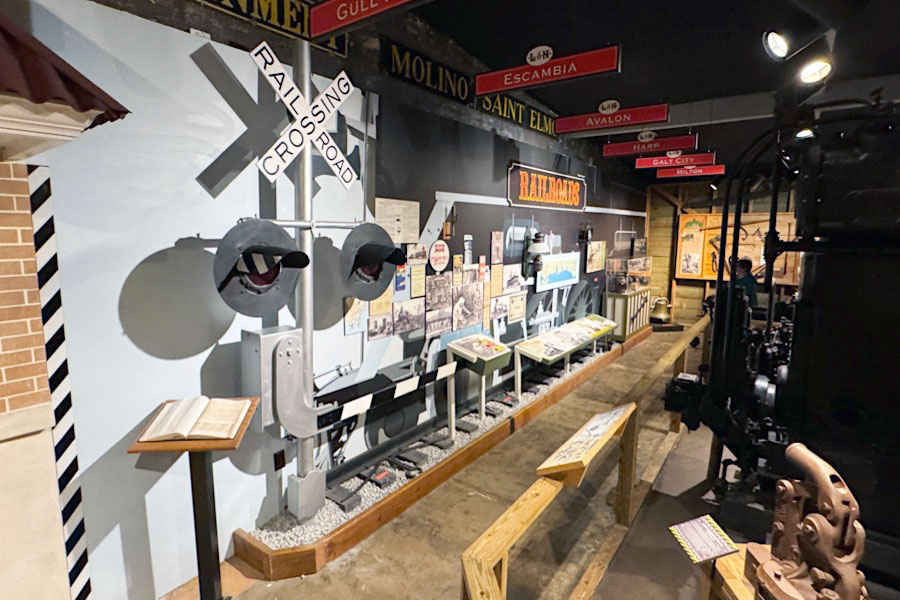
Sep 2024 / RWH
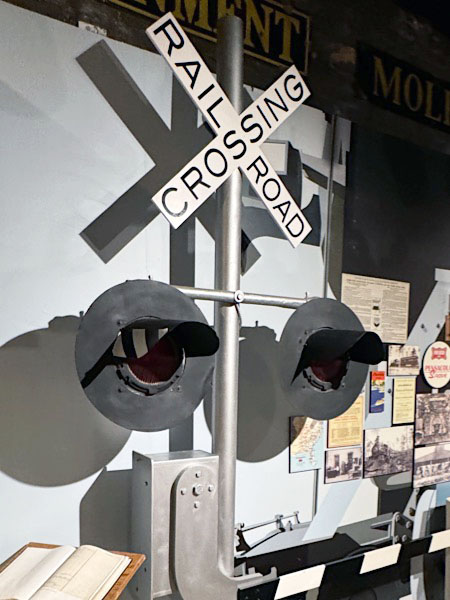
Sep 2024 / RWH
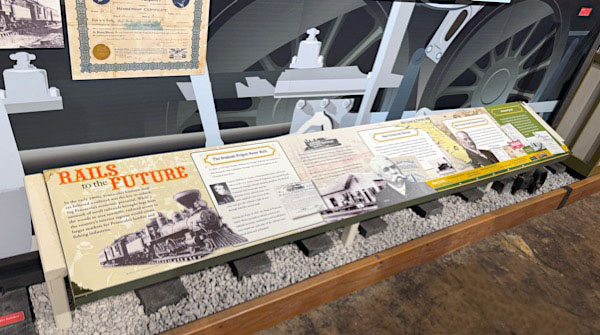
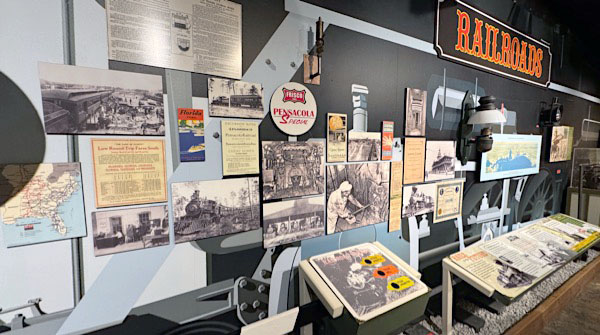
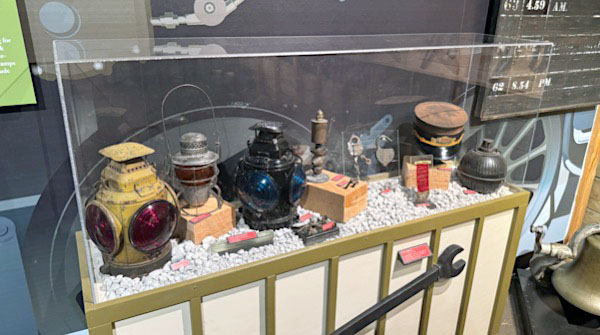

Sep 2024 / RWH

Sep 2024 / RWH
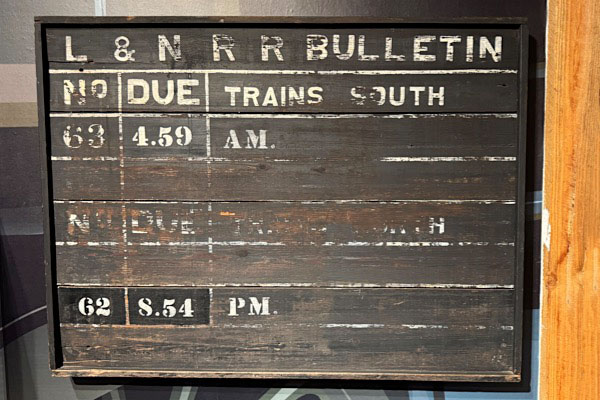
Sep 2024 / RWH
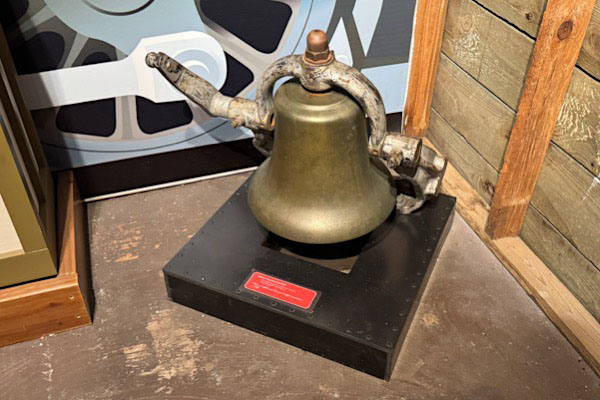
Sep 2024 / RWH


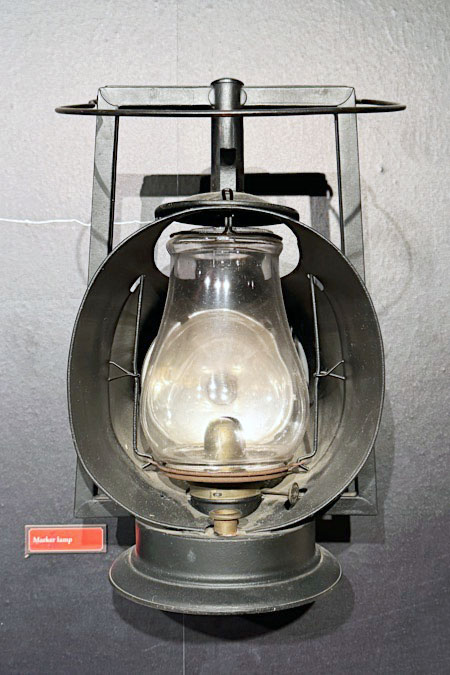
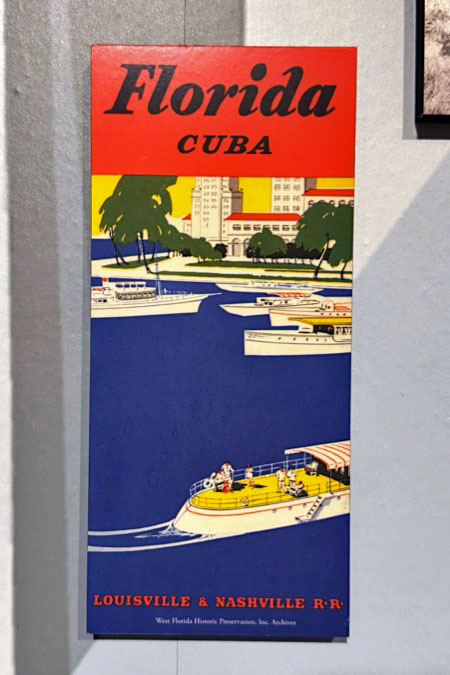
Sep 2024 / RWH
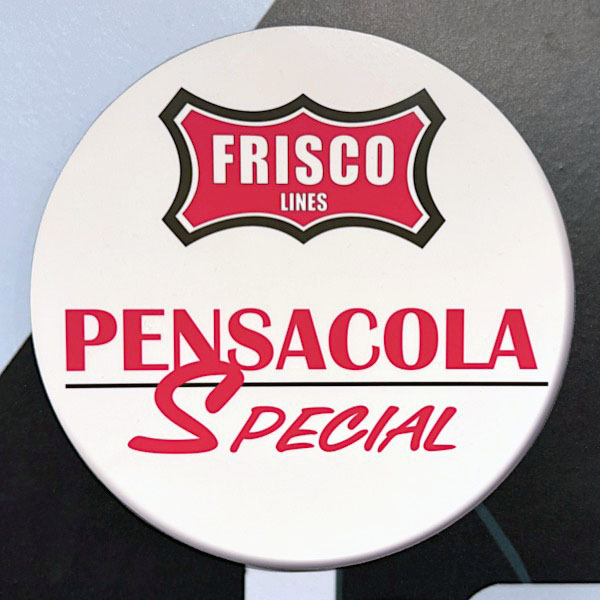
Sep 2024 / RWH

Sep 2024 / RWH
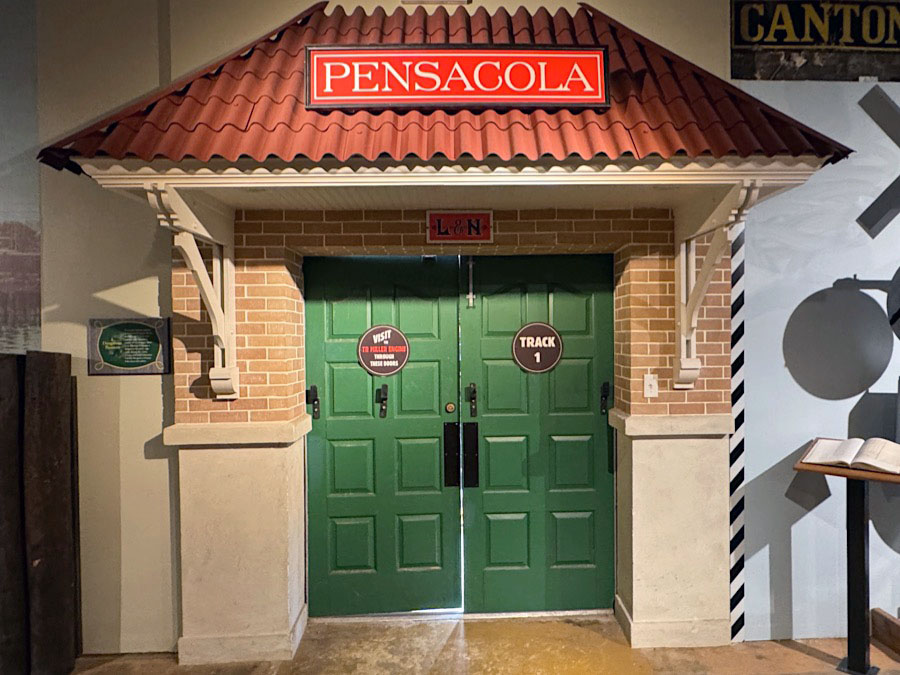
Sep 2024 / RWH

Sep 2024 / RWH
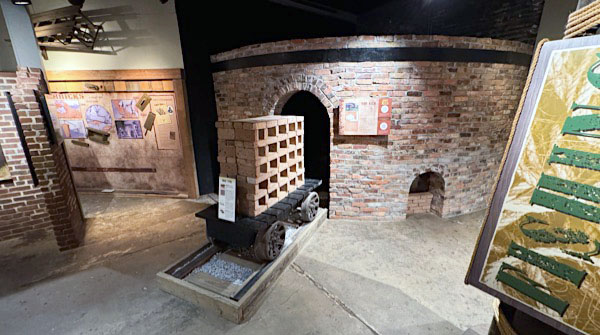
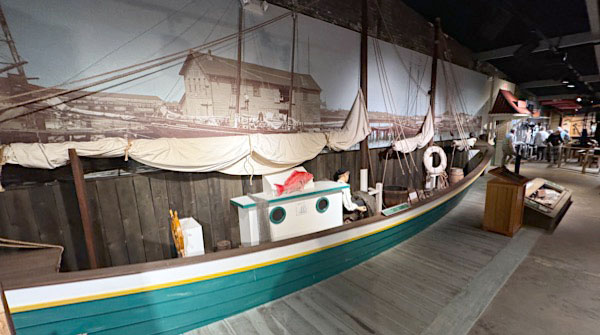
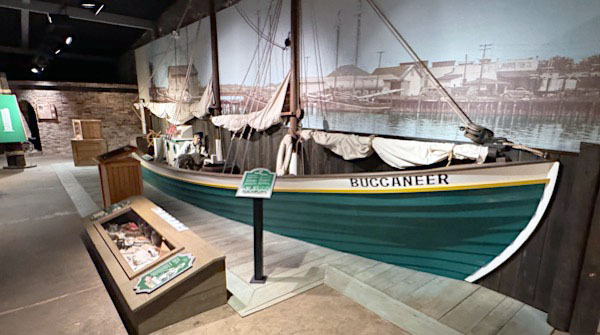

Sep 2024 / RWH
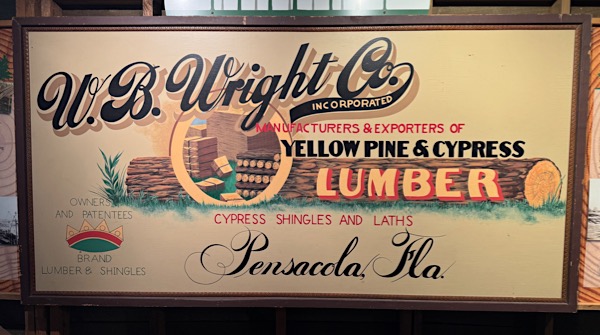
Sep 2024 / RWH
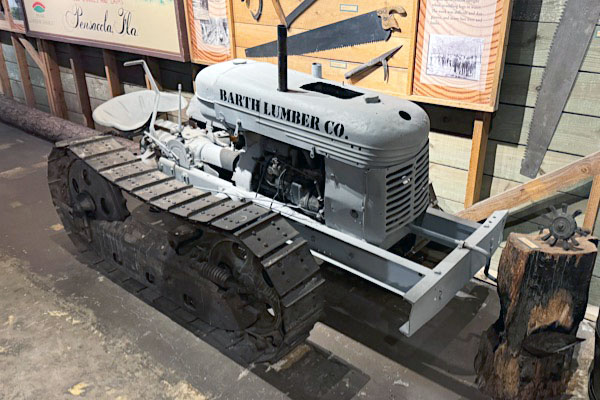
Sep 2024 / RWH
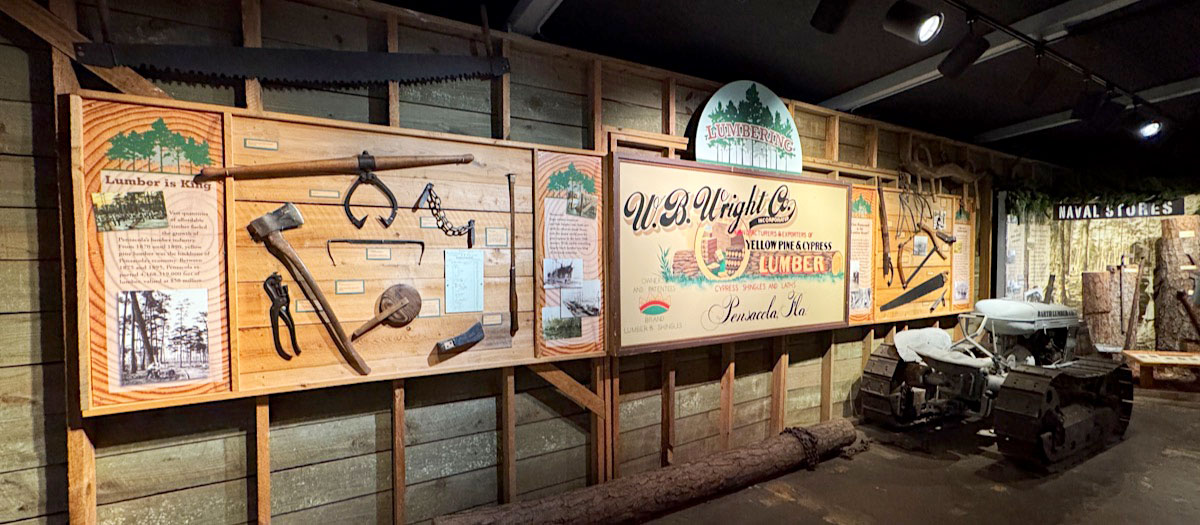
Sep 2024 / RWH
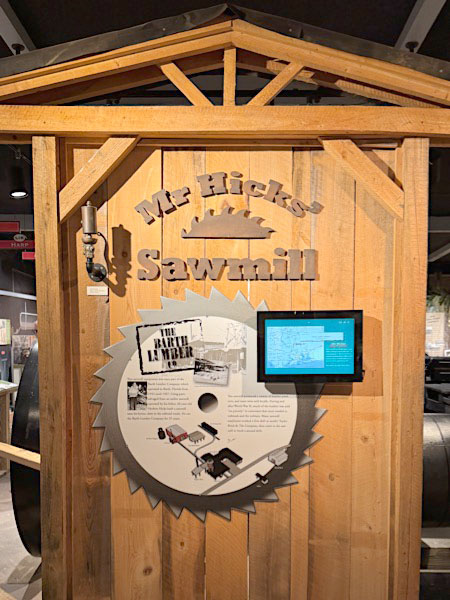
Sep 2024 / RWH

Sep 2024 / RWH
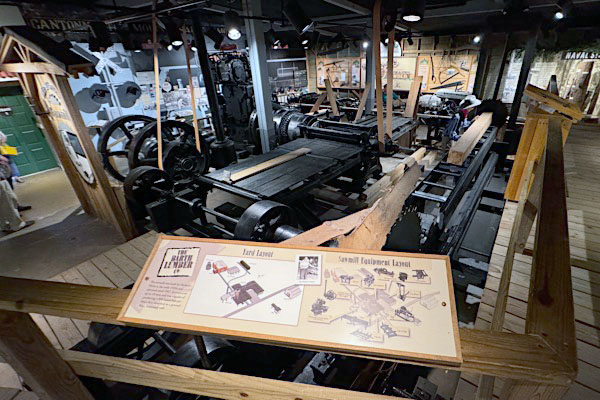
Sep 2024 / RWH
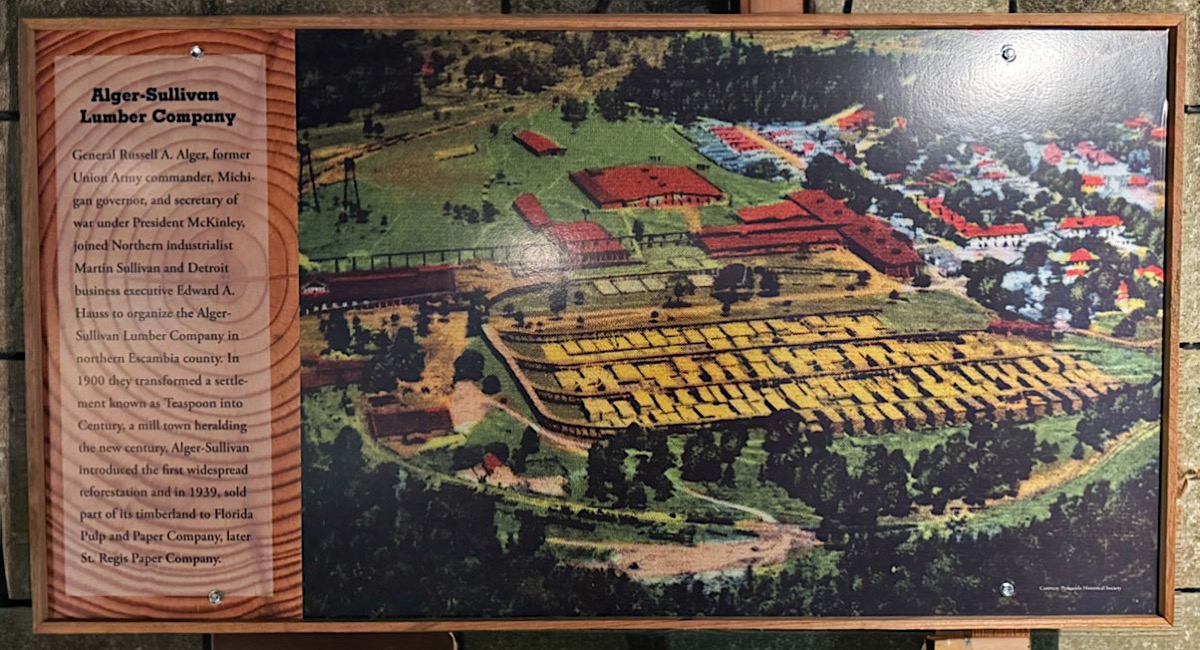
Sep 2024 / RWH
Museum of Commerce
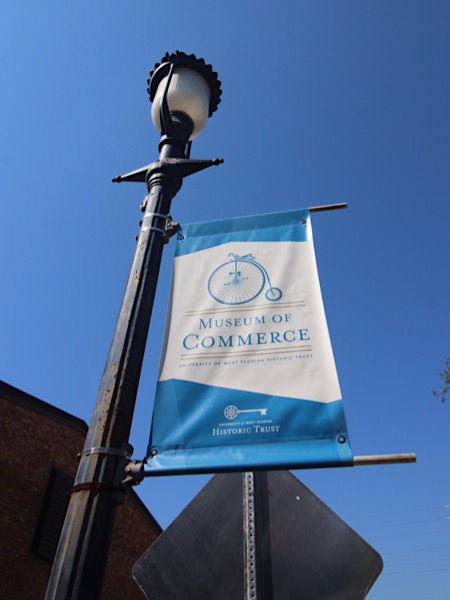
Sep 2024 / RWH
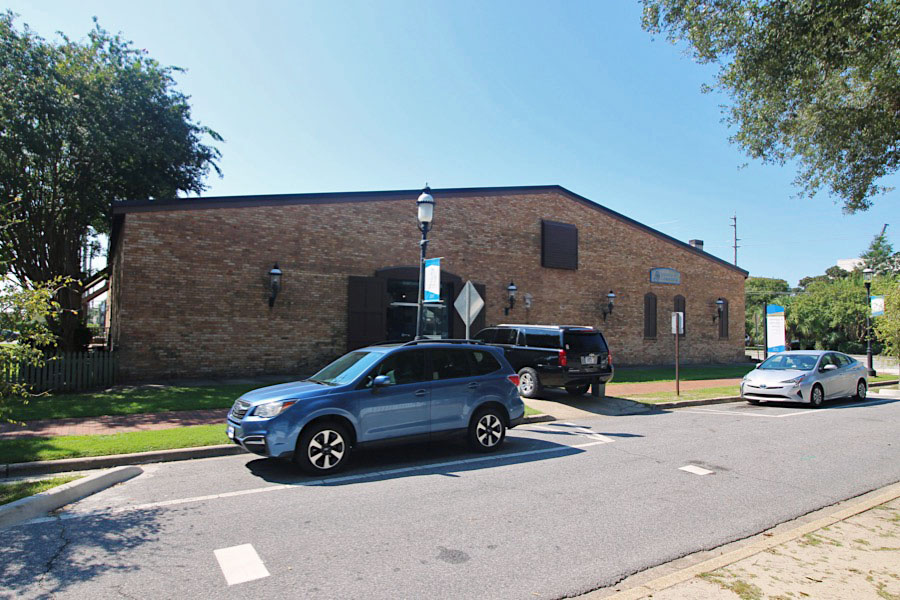
Sep 2024 / RWH

 nside this brick turn-of-the-century warehouse, which is included on the self-guided tour, is a reconstructed 1890s era streetscape. On exhibit are historic shops featuring toys, hardware, music, households, and leather goods. An interesting collection of horse drawn buggies and an antique local trolley car are also part of this nostalgic recreation of yesteryear.
nside this brick turn-of-the-century warehouse, which is included on the self-guided tour, is a reconstructed 1890s era streetscape. On exhibit are historic shops featuring toys, hardware, music, households, and leather goods. An interesting collection of horse drawn buggies and an antique local trolley car are also part of this nostalgic recreation of yesteryear.

Click to see the Pensacola Museum of Commerce plotted on a Google Maps page
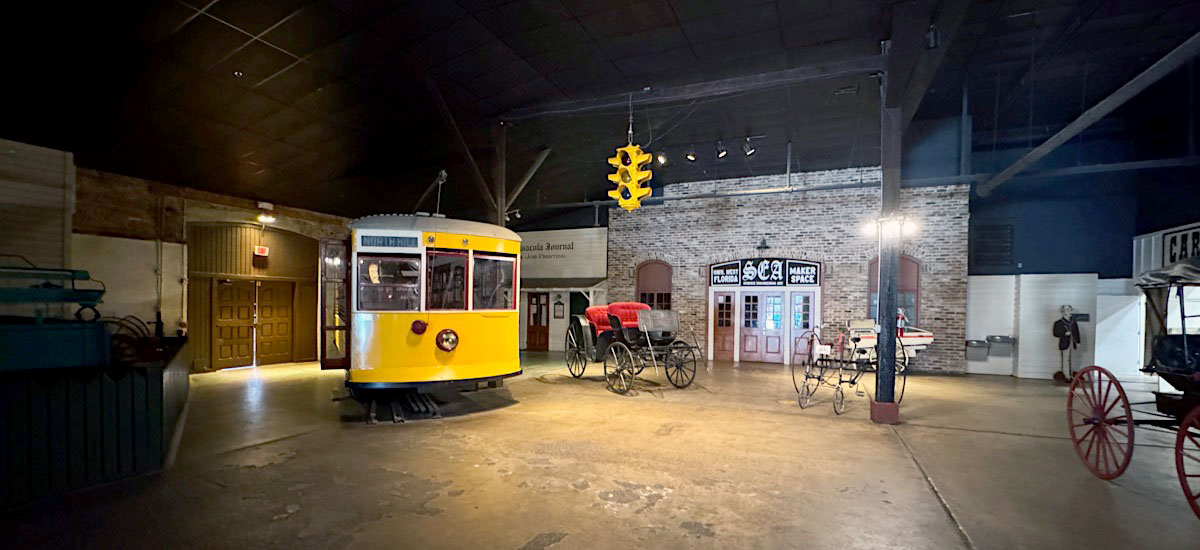
Sep 2024 / RWH
 Brill #61
Brill #61
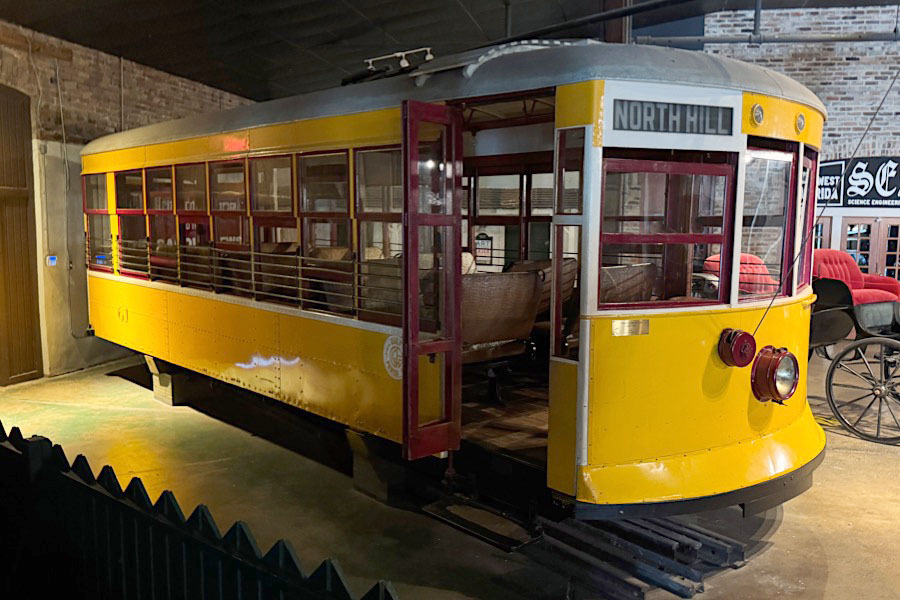
Pensacola Streetcar #61
Sep 2024 / RWH
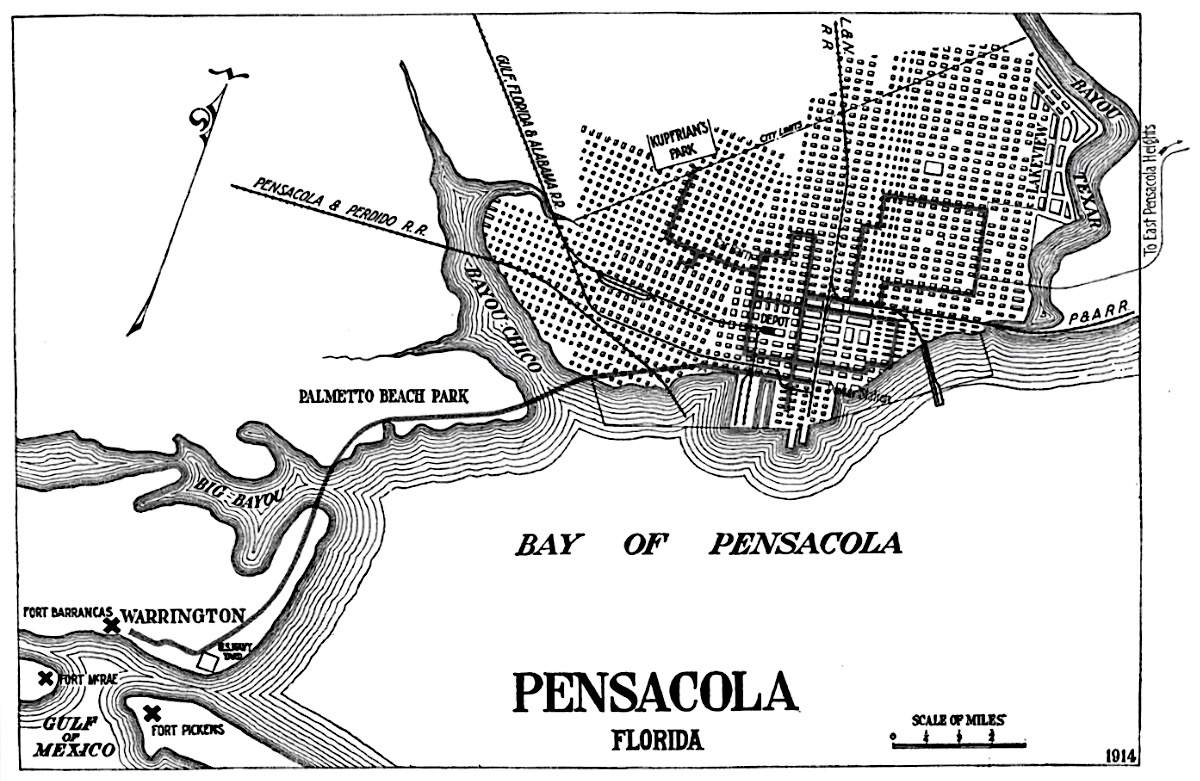
Pensacola 1914 streetcar map / collection
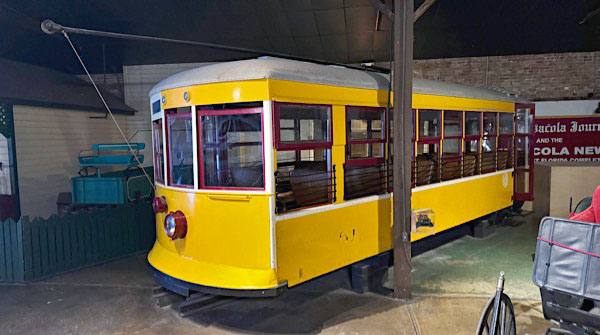
Sep 2024 / RWH

Sep 2024 / RWH
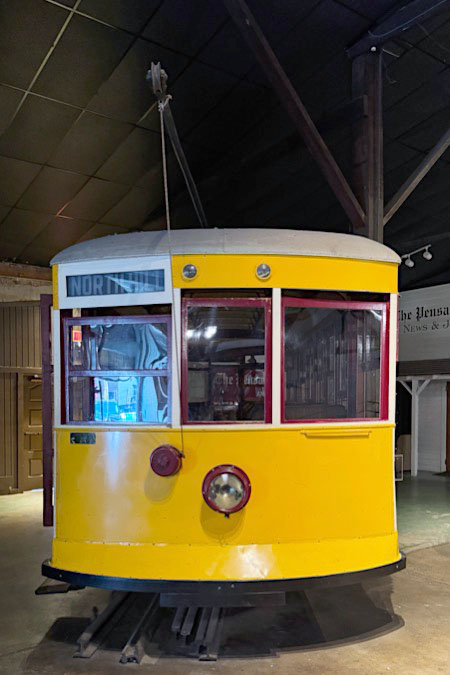
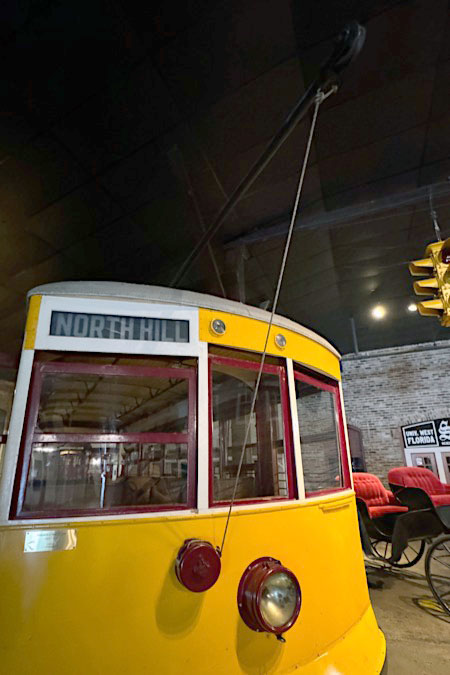
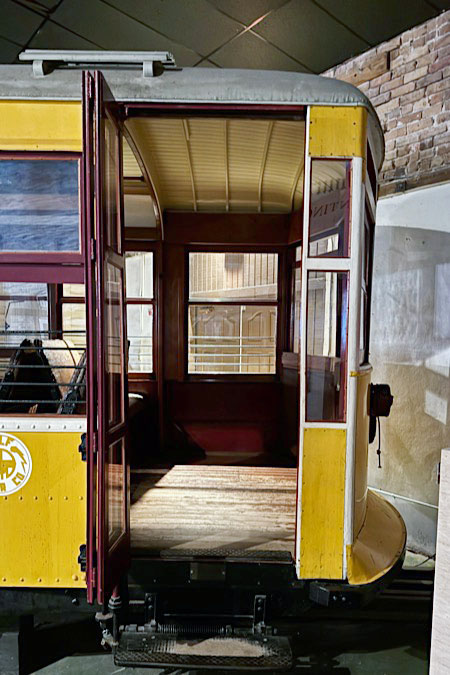
Sep 2024 / RWH
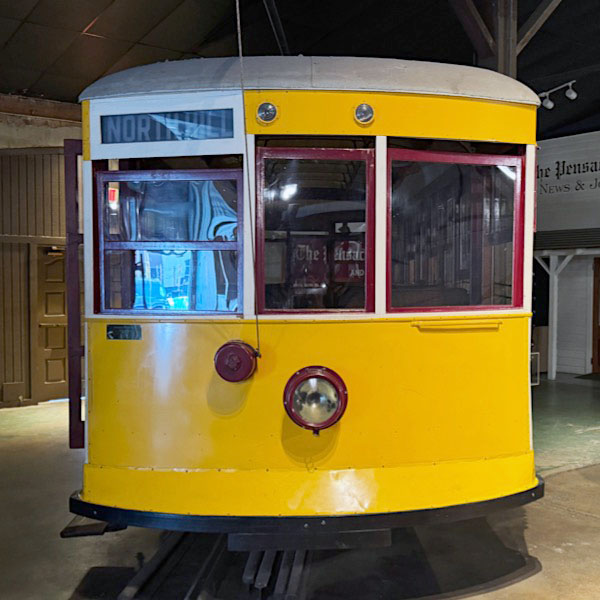
Sep 2024 / RWH
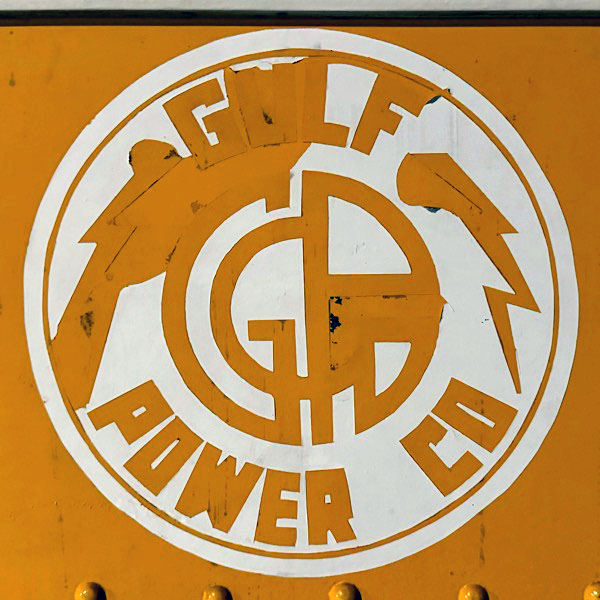
Sep 2024 / RWH

Sep 2024 / RWH
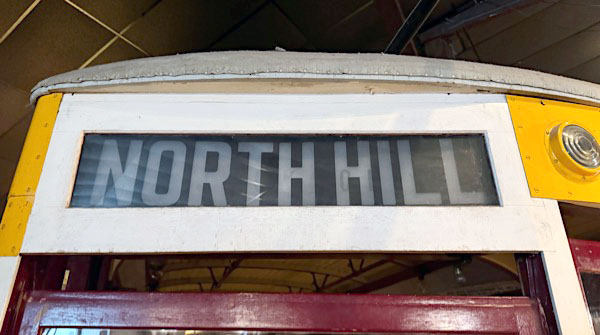
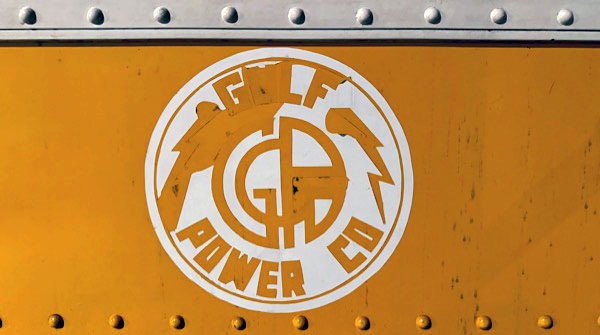
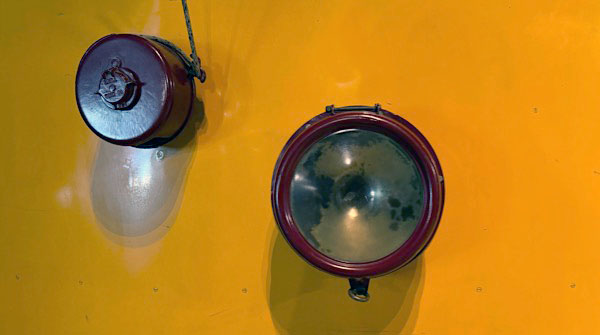
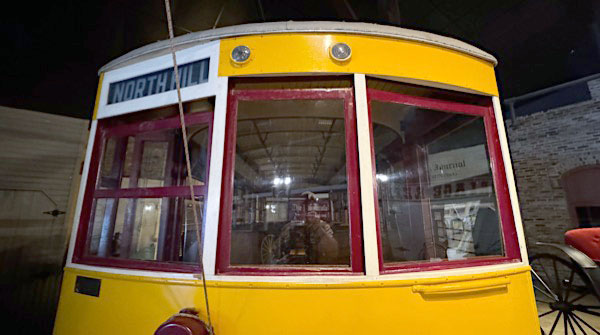
Sep 2024 / RWH

See also our complete Pensacola Streetcar scrapbook in Streetcars
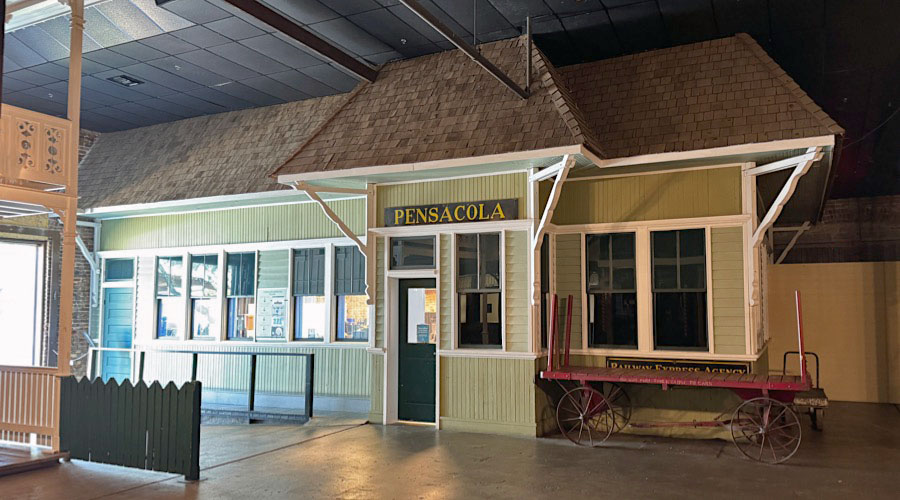
Sep 2024 / RWH
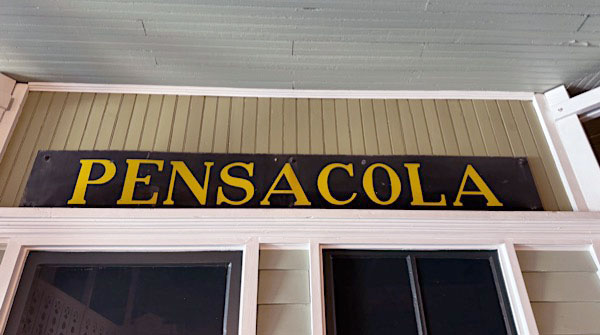
Sep 2024 / RWH
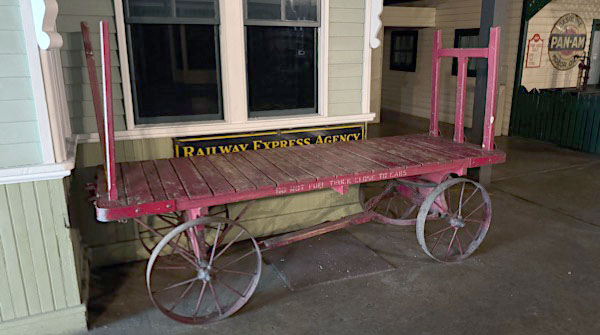
Sep 2024 / RWH

Sep 2024 / RWH
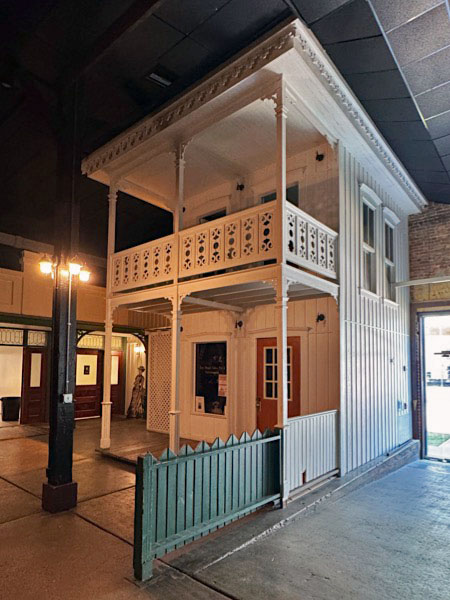
Sep 2024 / RWH
Historic Pensacola Village
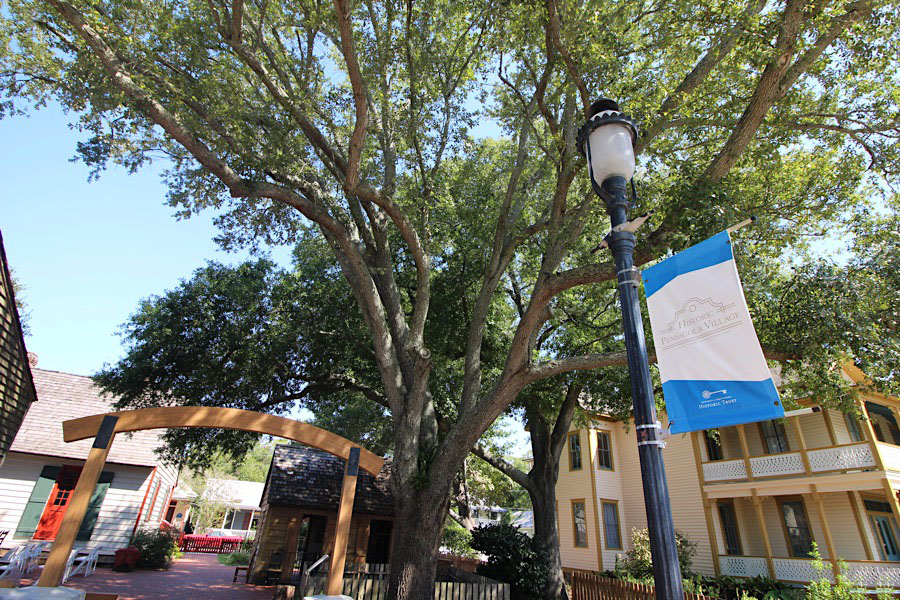
Pensacola, Fl / Sep 2024 / RWH

 istoric Pensacola encompasses 8 1/2 acres and 30 properties, 12 of which are open to the public. As you experience our site, you'll see examples of a range of architectural styles including Mediterranean Revival, Renaissance Revival, Greek Revival, Classical Revival, French Creole, and Folk Victorian.
In addition to architectural style, you will also see these properties interpreted in a variety of time periods, such as Colonial, Victorian and 1920s Pensacola, through furnishings and other artifacts from our collection of more than 150,000 artifacts of historical and antiquarian interest to the City of Pensacola, Escambia County and West Florida. You will also get to interact with our living history interpreters who bring history to life.
istoric Pensacola encompasses 8 1/2 acres and 30 properties, 12 of which are open to the public. As you experience our site, you'll see examples of a range of architectural styles including Mediterranean Revival, Renaissance Revival, Greek Revival, Classical Revival, French Creole, and Folk Victorian.
In addition to architectural style, you will also see these properties interpreted in a variety of time periods, such as Colonial, Victorian and 1920s Pensacola, through furnishings and other artifacts from our collection of more than 150,000 artifacts of historical and antiquarian interest to the City of Pensacola, Escambia County and West Florida. You will also get to interact with our living history interpreters who bring history to life.
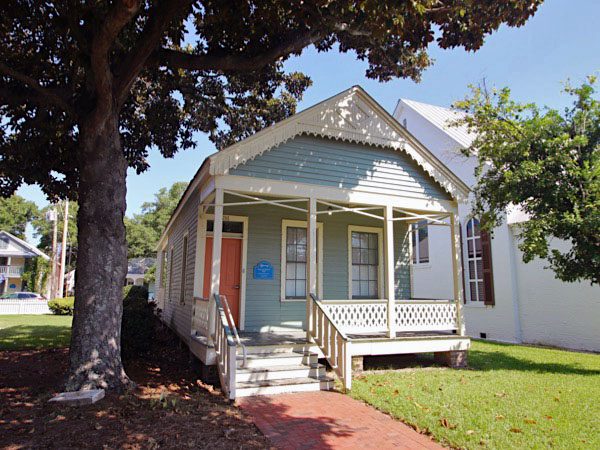
Pfieffer House
Pensacola, Fl / Sep 2024 / RWH
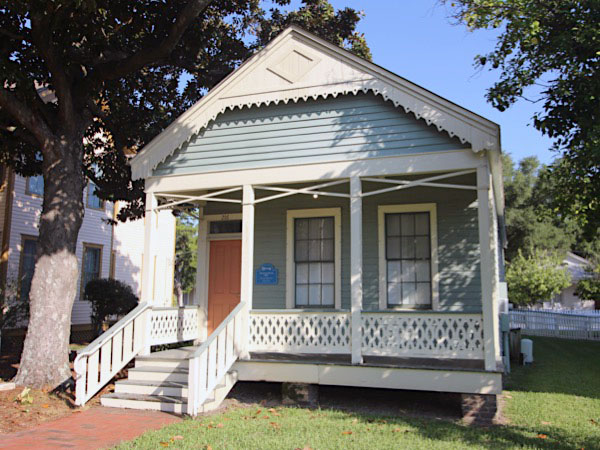
Pensacola, Fl / Sep 2024 / RWH
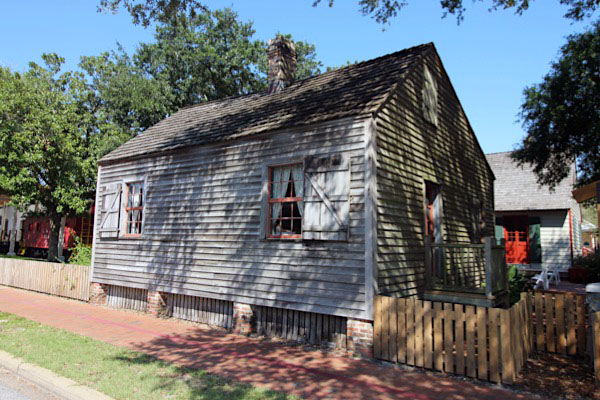
Julee Cottage
Pensacola, Fl / Sep 2024 / RWH

Pensacola, Fl / Sep 2024 / RWH

Pensacola, Fl / Sep 2024 / RWH
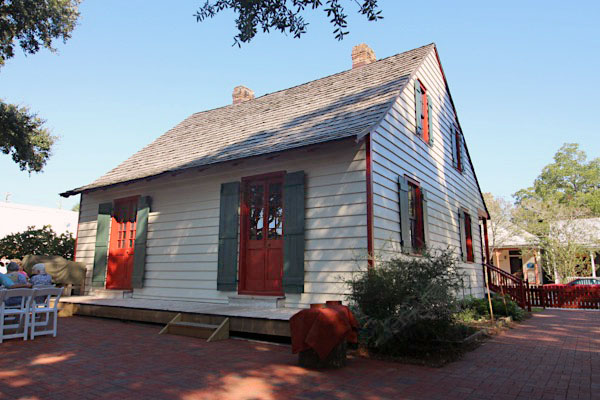
Pensacola, Fl / Sep 2024 / RWH

Lear/Rocheblave House
Pensacola, Fl / Sep 2024 / RWH
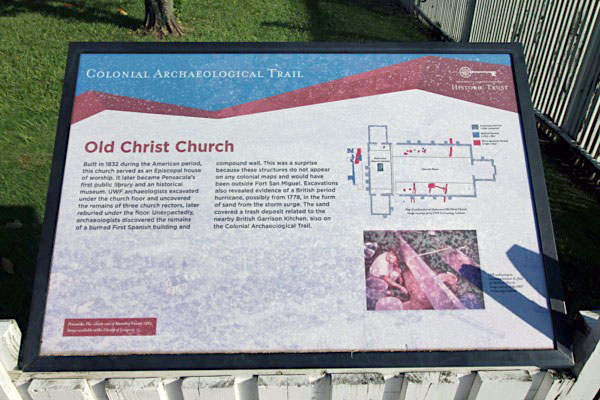
Pensacola, Fl / Sep 2024 / RWH

Pensacola, Fl / Sep 2024 / RWH
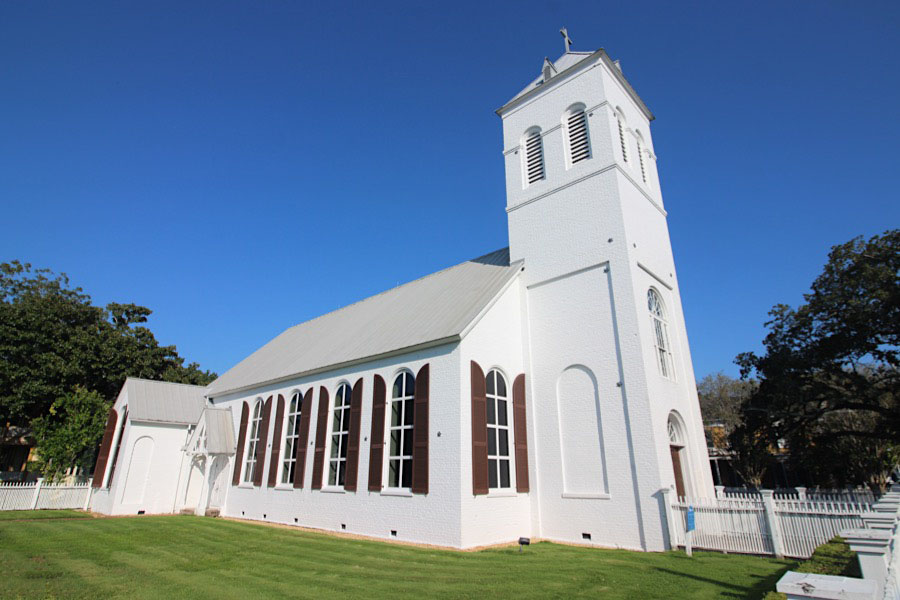
Old Christ Church
Pensacola, Fl / Sep 2024 / RWH
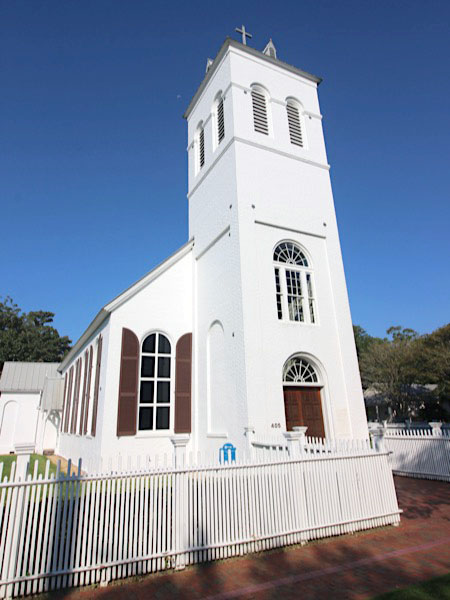
Sep 2024 / RWH
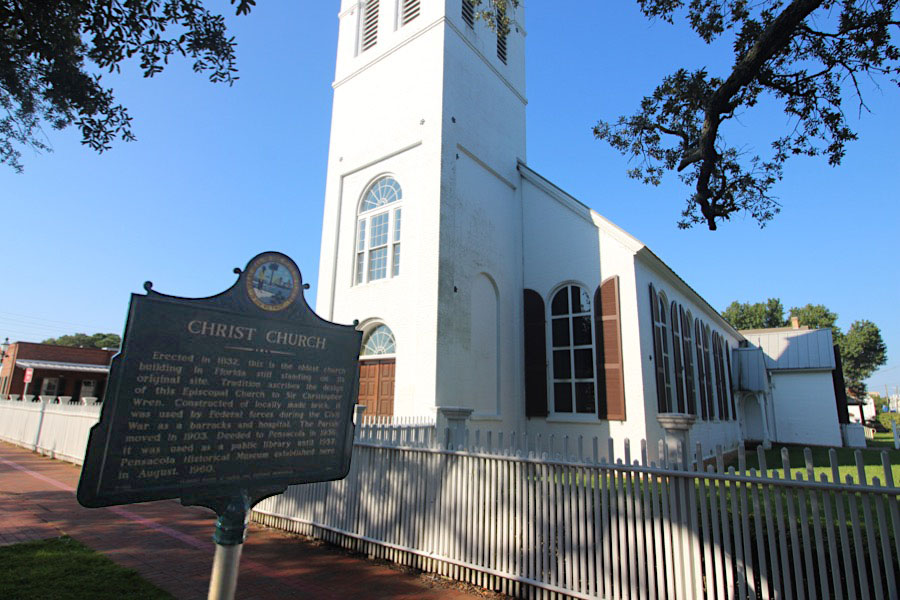
Pensacola, Fl / Sep 2024 / RWH

 ld Christ Church was built in 1832 for the “Protestant Association in the City of Pensacola” with the purpose to build an Episcopal church in Pensacola. The architect and builder are unknown. The church now stands as one of the oldest Protestant churches in the state of Florida, located on the original site and being the original masonry structure. Old Christ Church has strong elements of Norman-Gothic: a transition period from the traditional Roman-Classical architectural style to Gothic style.
ld Christ Church was built in 1832 for the “Protestant Association in the City of Pensacola” with the purpose to build an Episcopal church in Pensacola. The architect and builder are unknown. The church now stands as one of the oldest Protestant churches in the state of Florida, located on the original site and being the original masonry structure. Old Christ Church has strong elements of Norman-Gothic: a transition period from the traditional Roman-Classical architectural style to Gothic style.

Pensacola, Fl / Sep 2024 / RWH

Sep 2024 / RWH

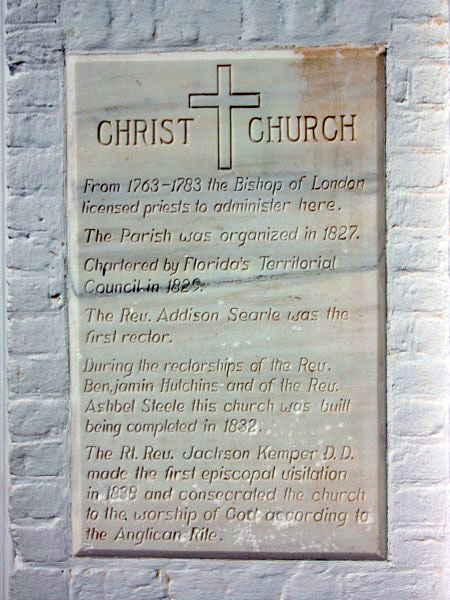


Sep 2024 / RWH
 Lagniappe
Lagniappe
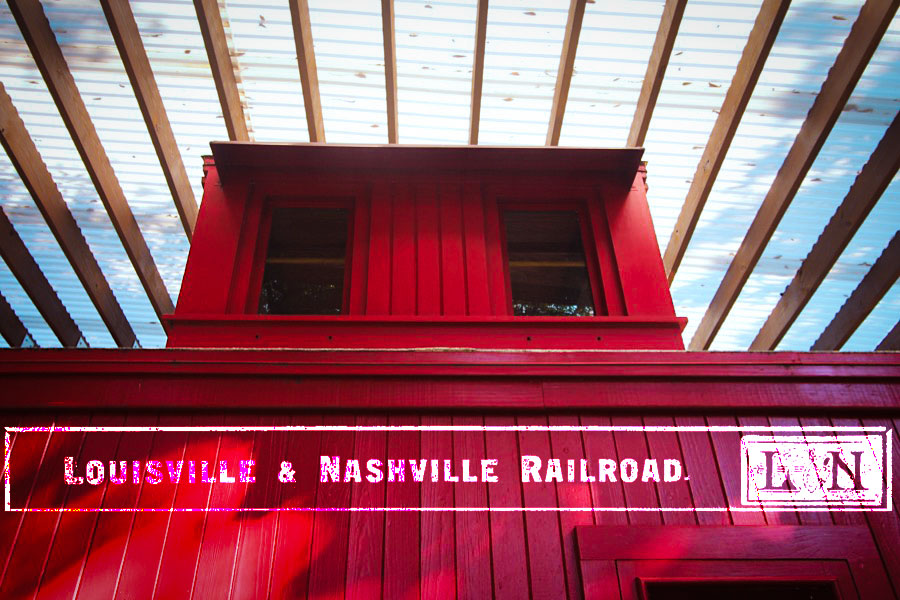
Still the Old Reliable
image and artwork RWH
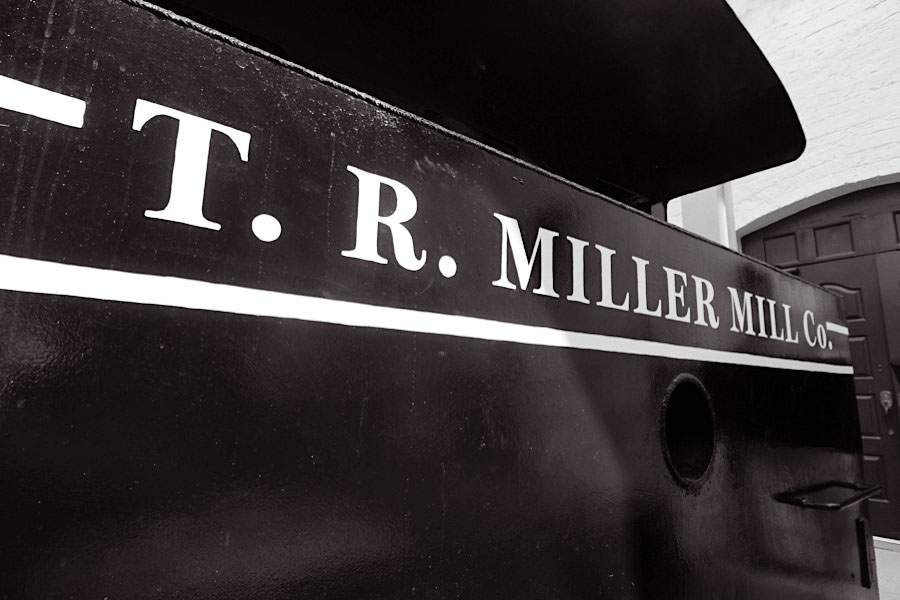
Mr. Miller's Machine
Sep 2024 / RWH
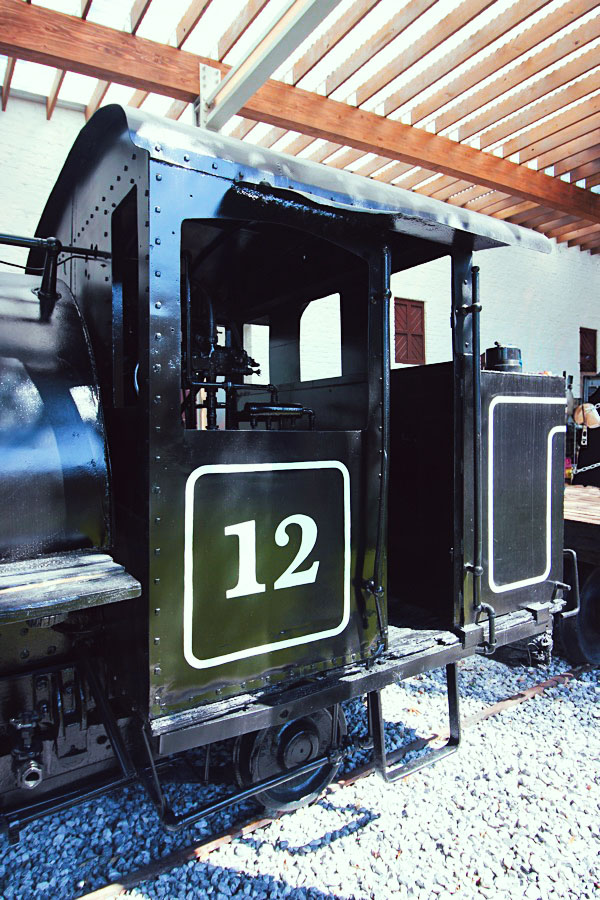
A Dozen Decades
Sep 2024 / RWH
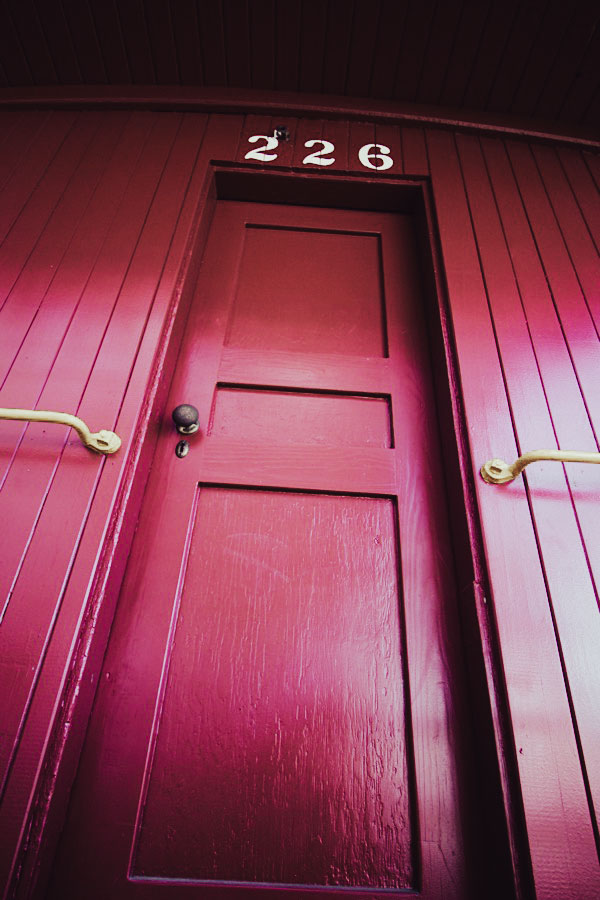
A Place to Call Home
Sep 2024 / RWH

Miller Marquee
images and artwork RWH

Class is in Session
Pensacola, Fl / Sep 2024 / RWH

Safety Last
Sep 2024 / RWH

Every Dog Has Its Day
Sep 2024 / RWH
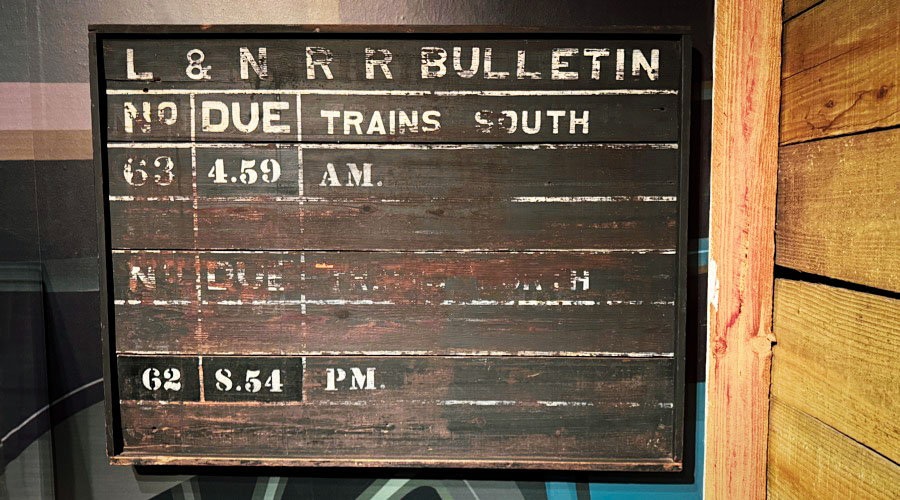
Attention! Attention!
Sep 2024 / RWH
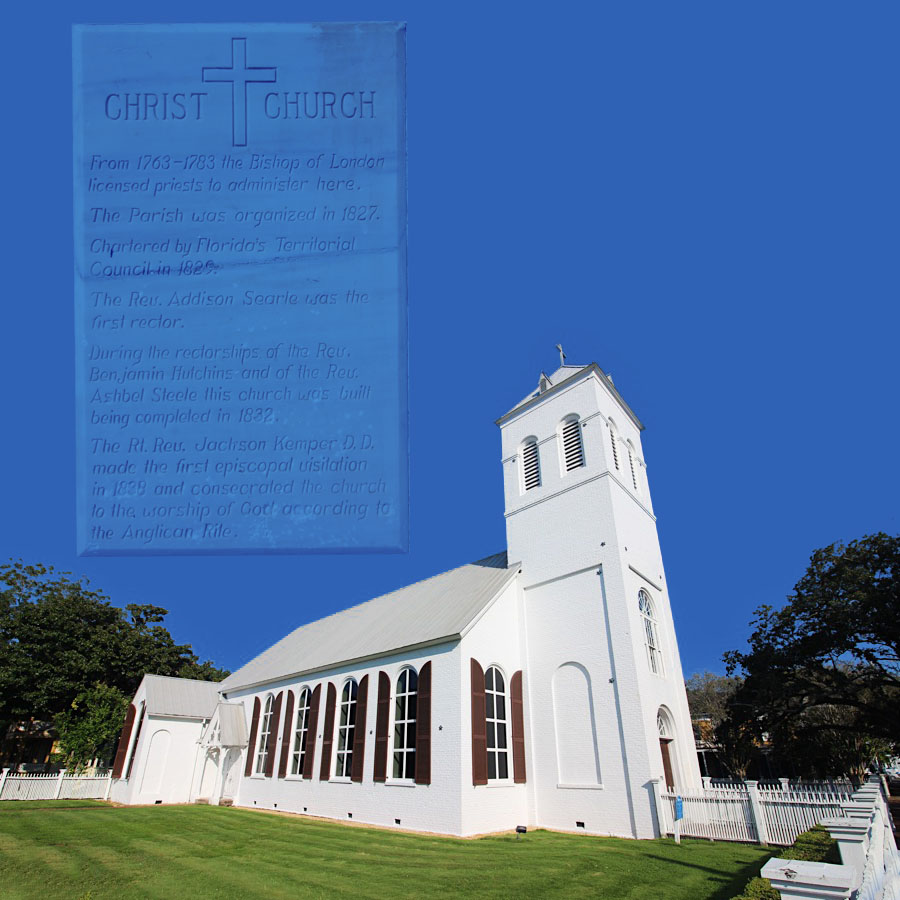
Christ Church
Pensacola, Fl / Sep 2024 / RWH
 Snapshots
Snapshots
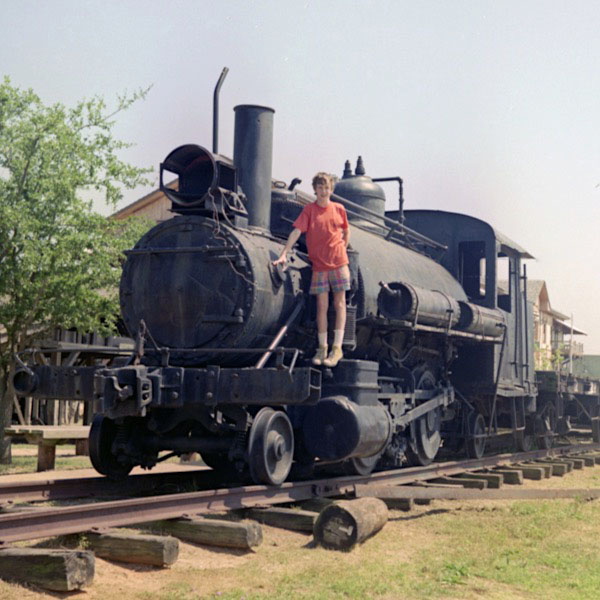
Pensacola, Fl / 1980s / JCH
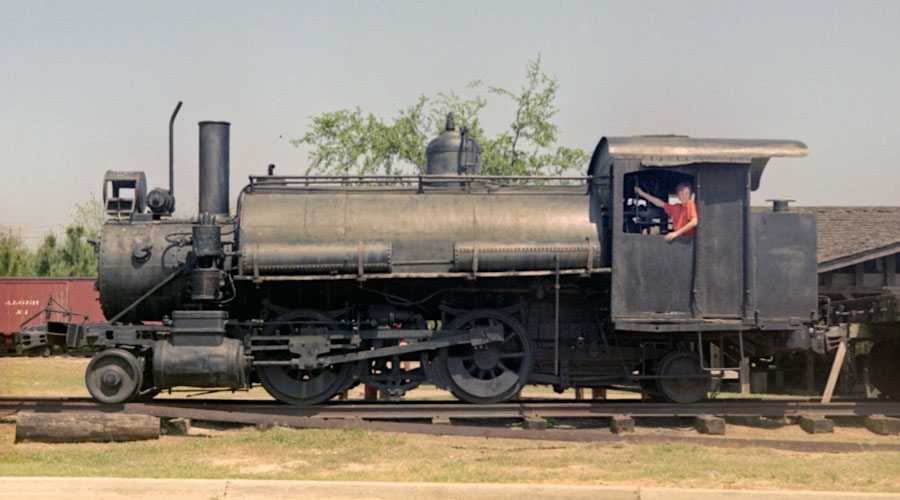
Pensacola, Fl / 1980s / JCH

Pensacola, Fl / Sep 2024 / RWH
Links / Sources
- University of West Florida Historic Trust website
- Wikipedia article for Pensacola Historic District
- Pensacola Heritage Foundation website

